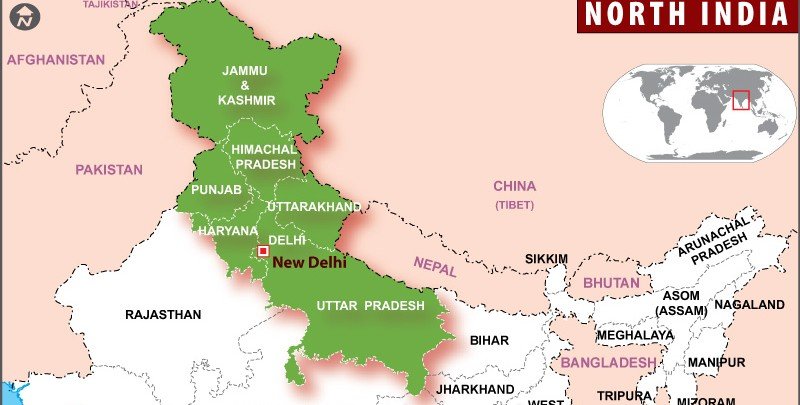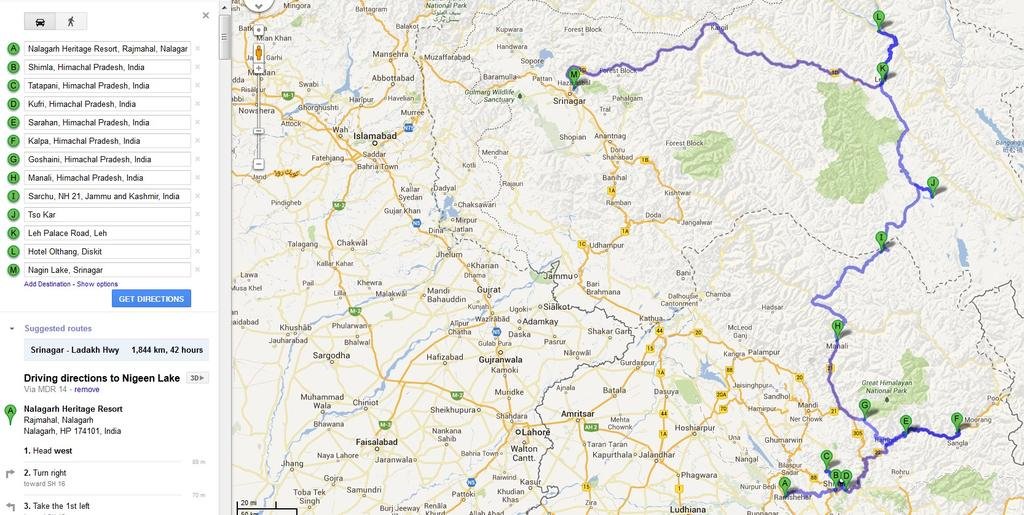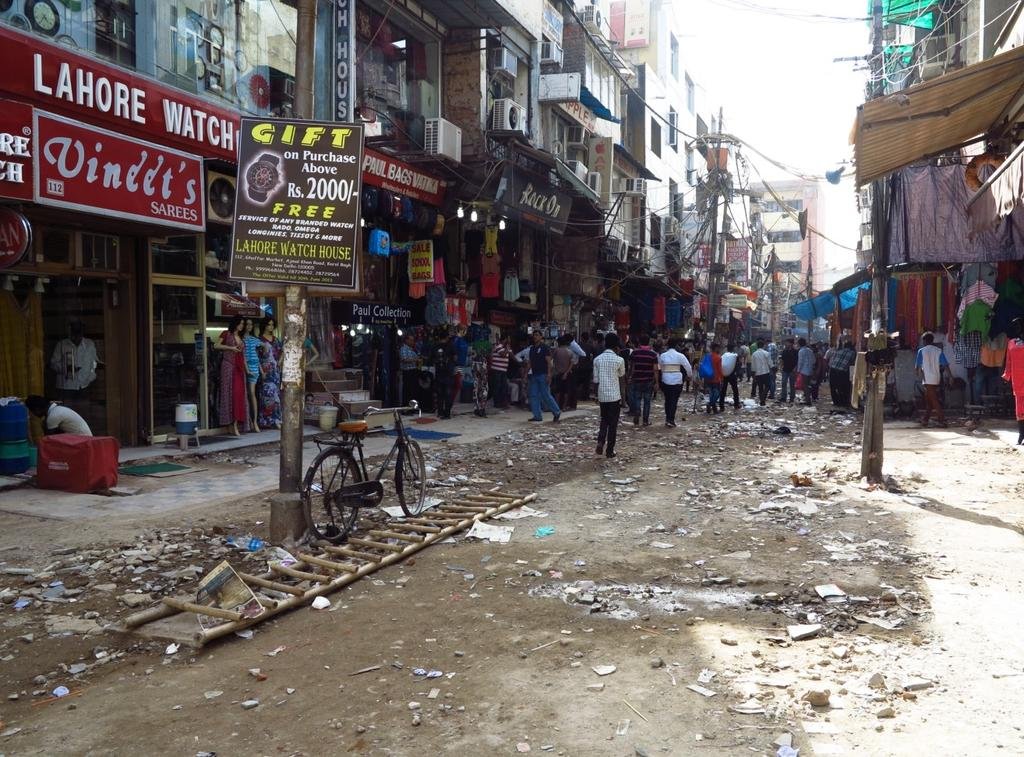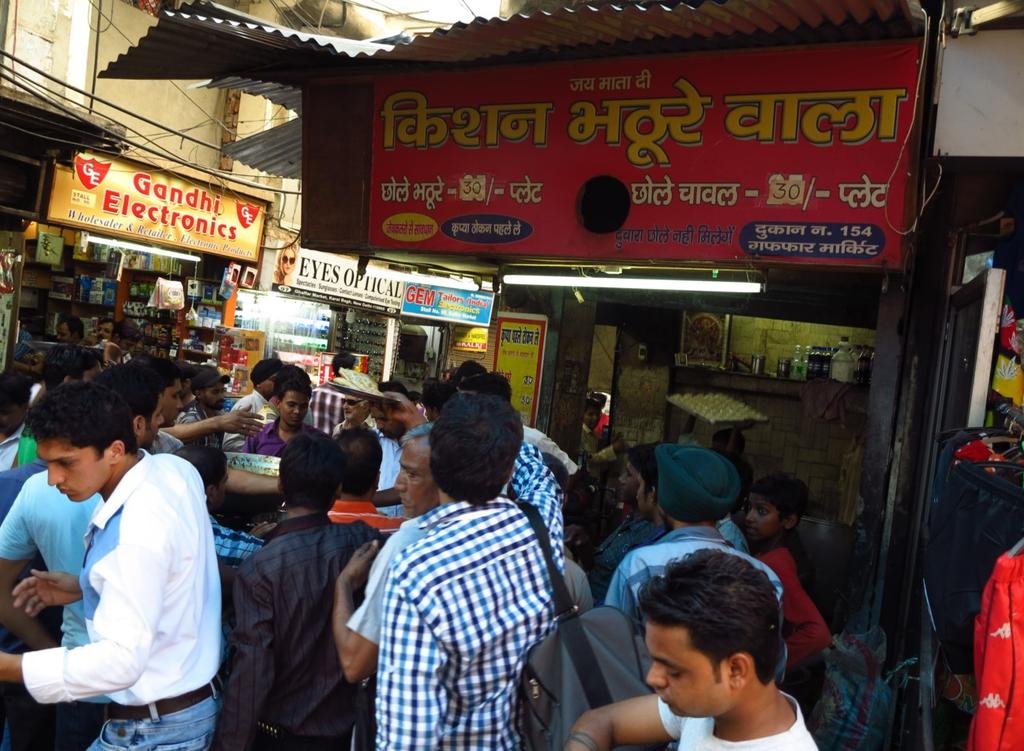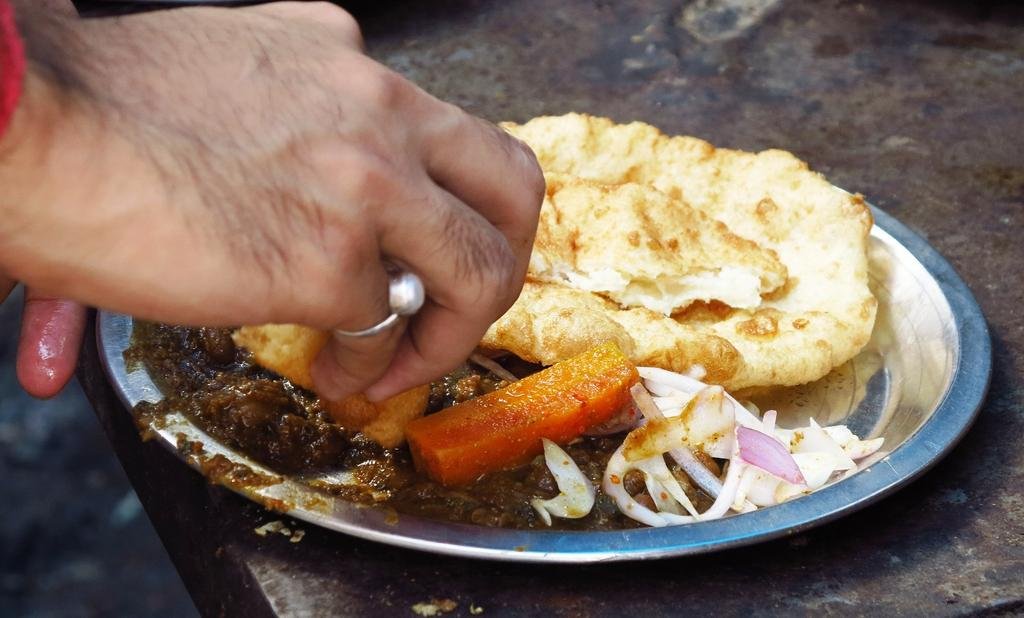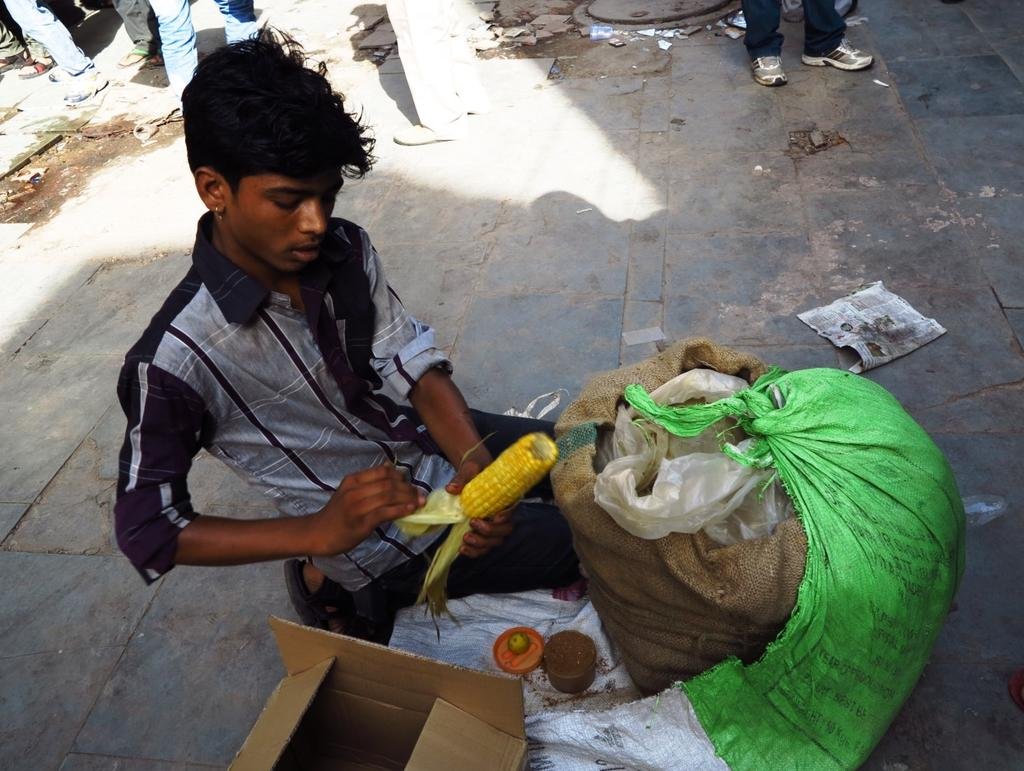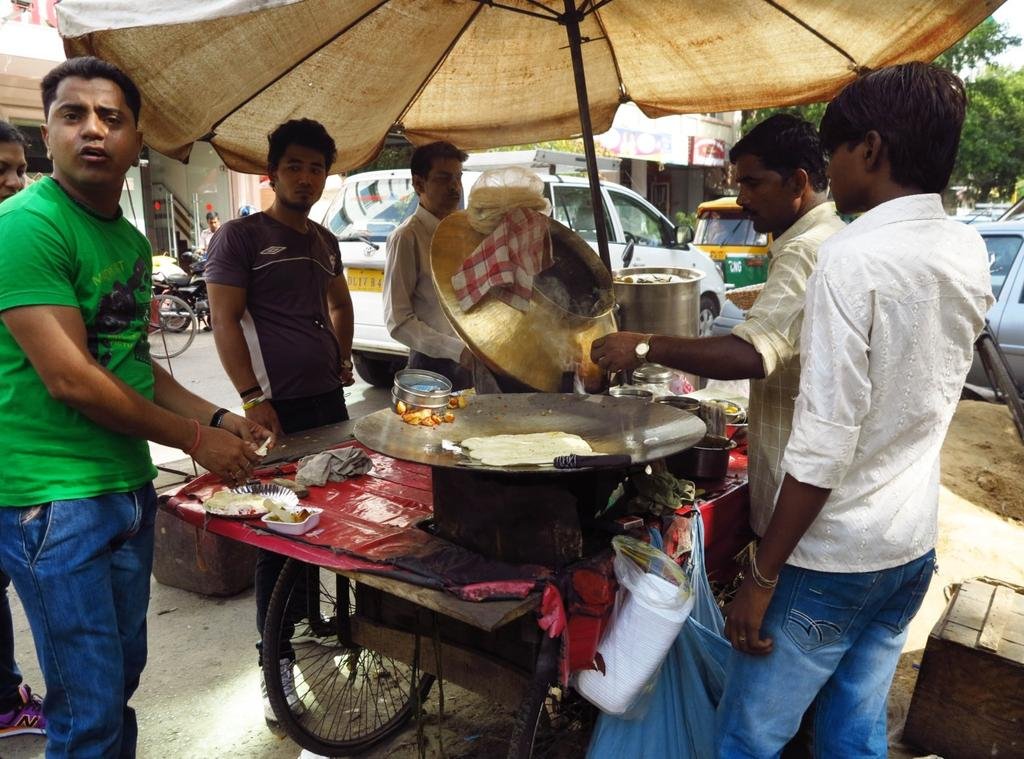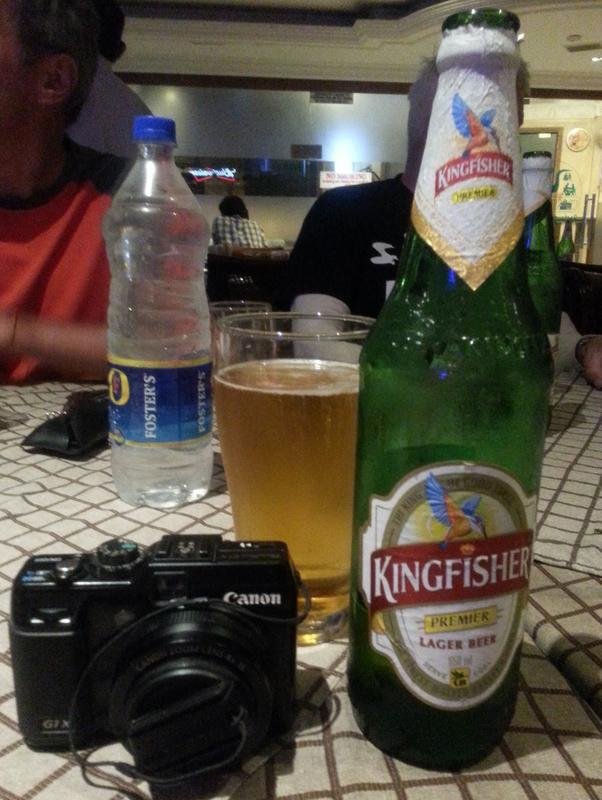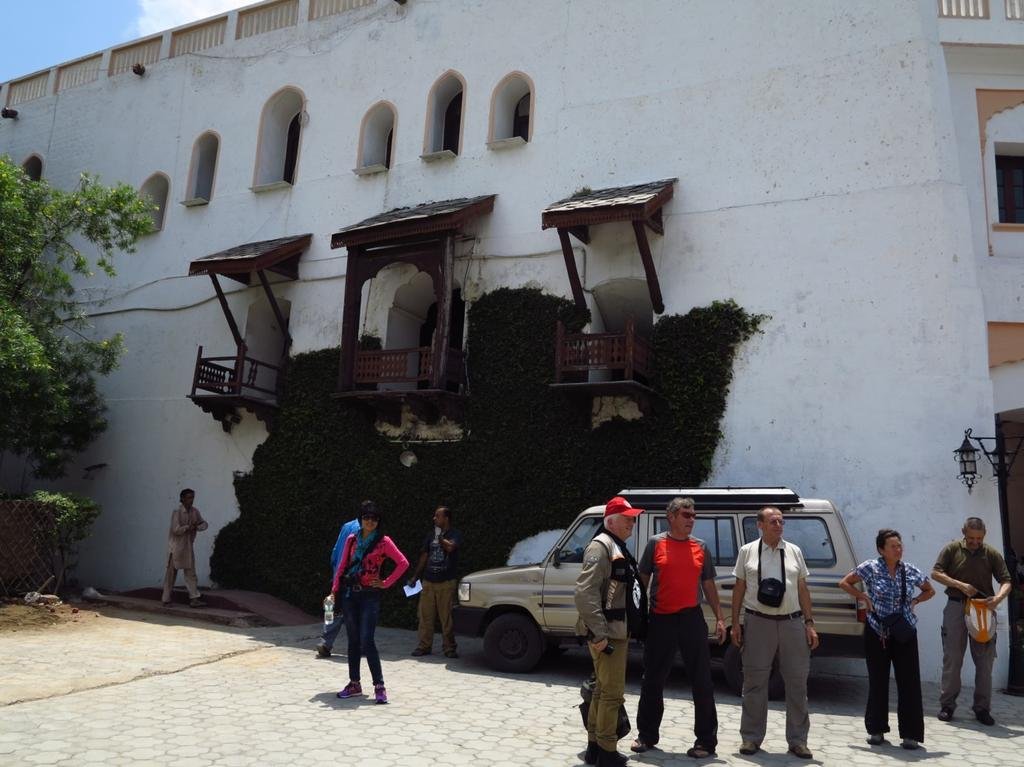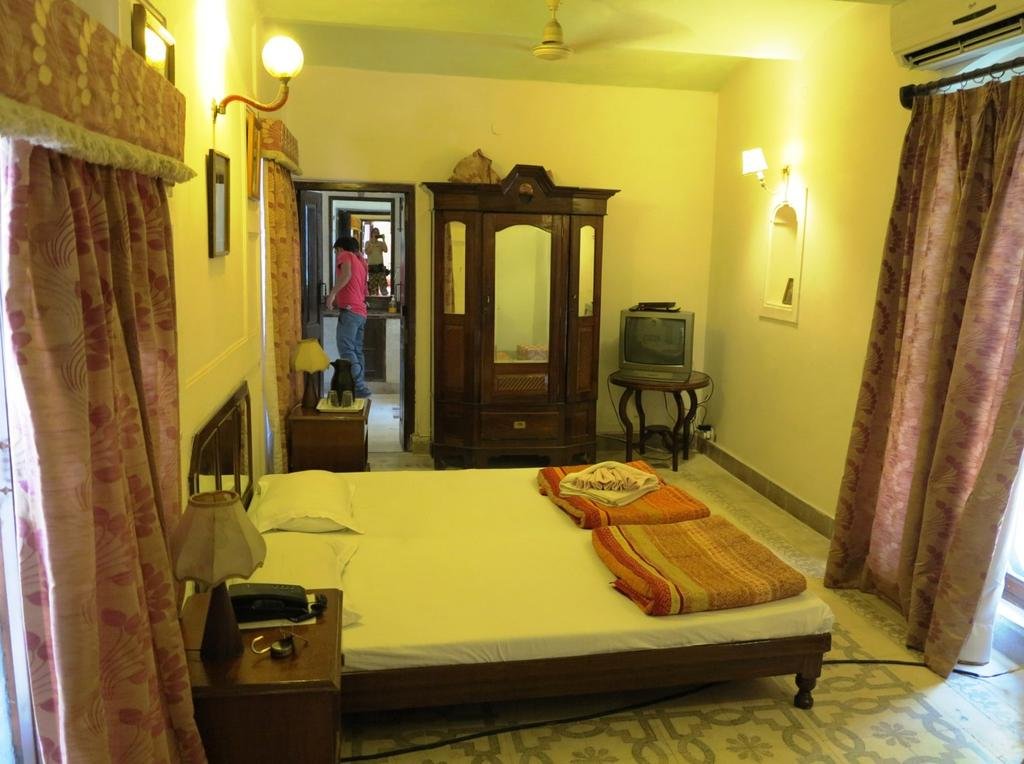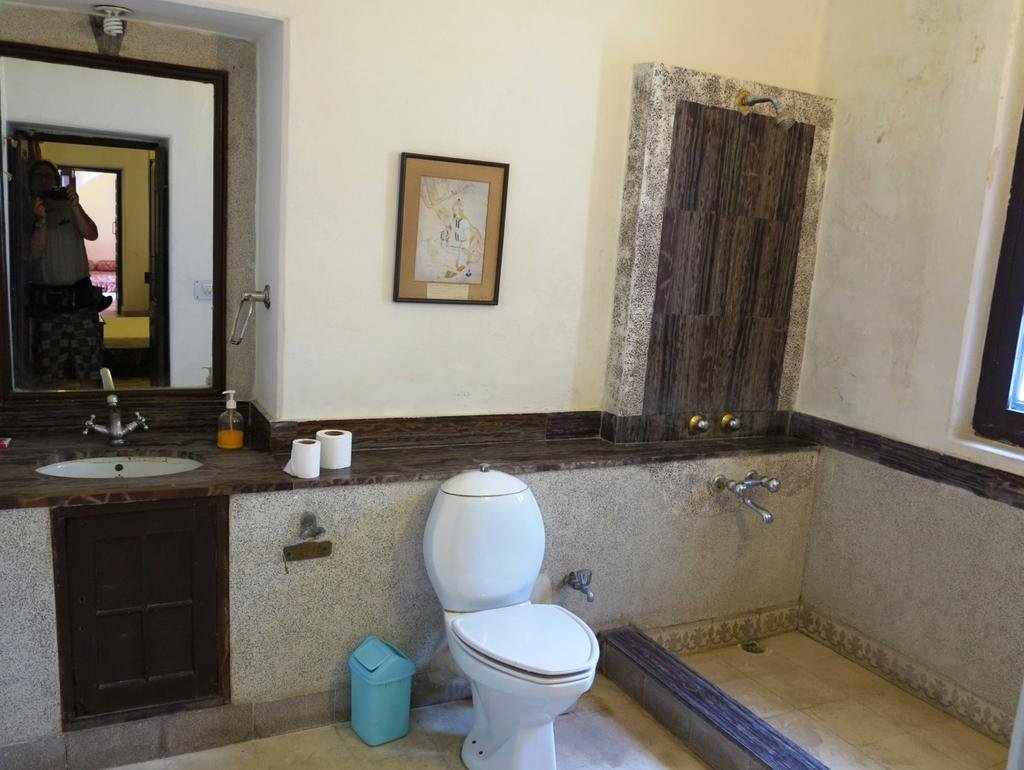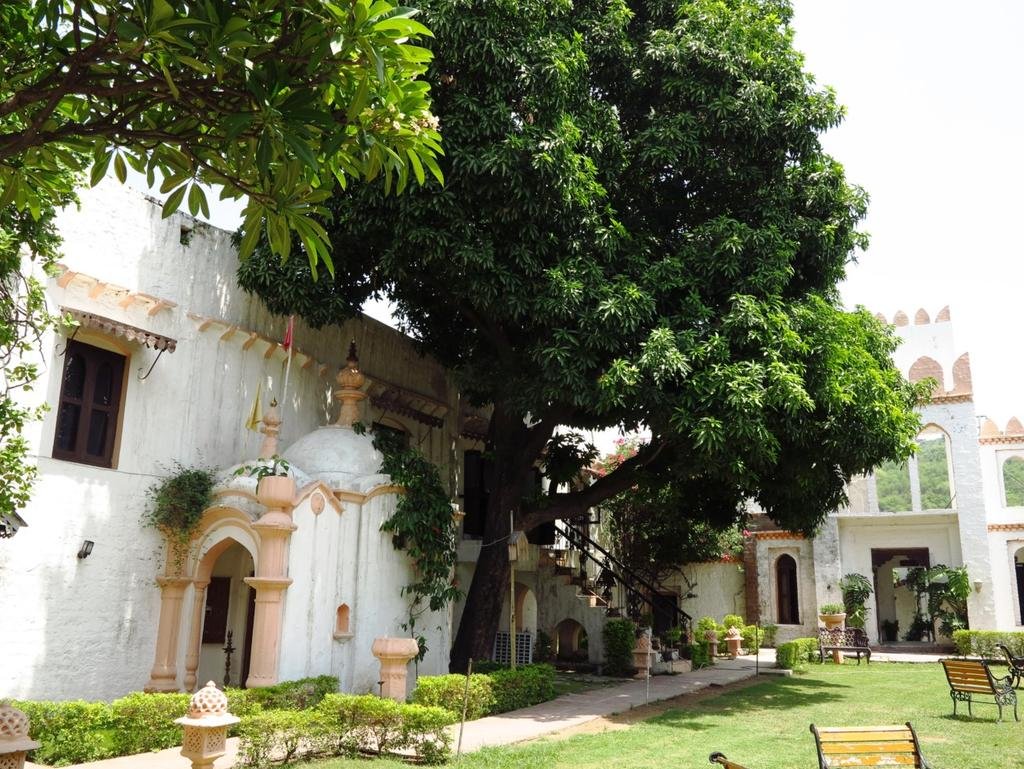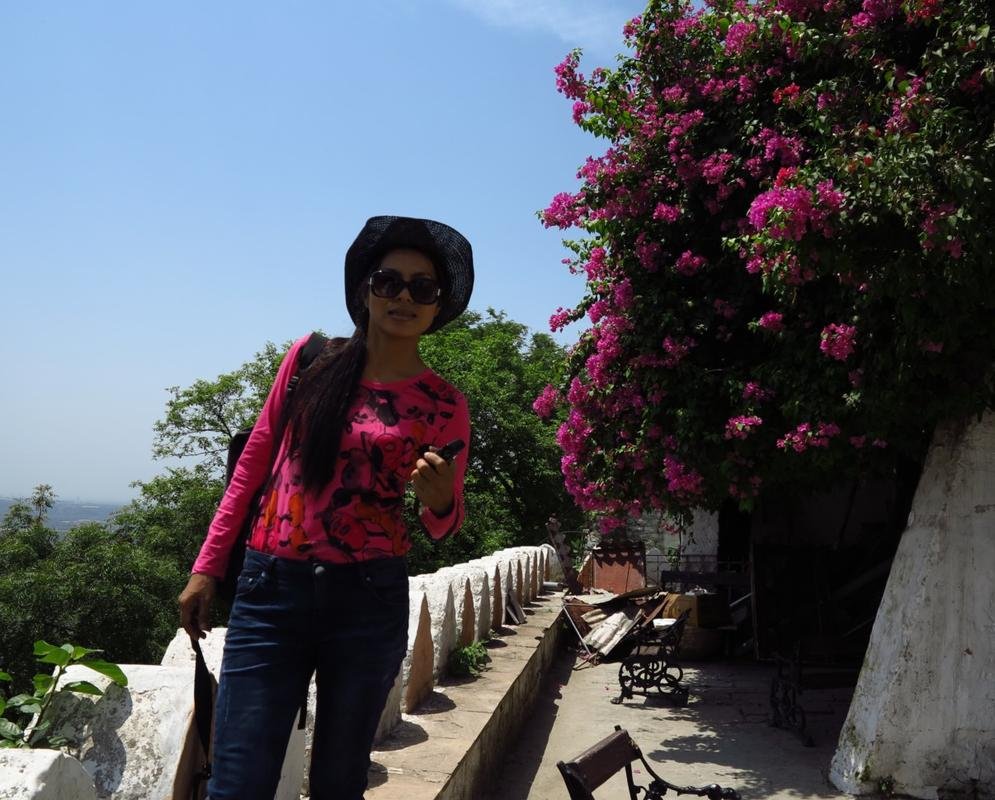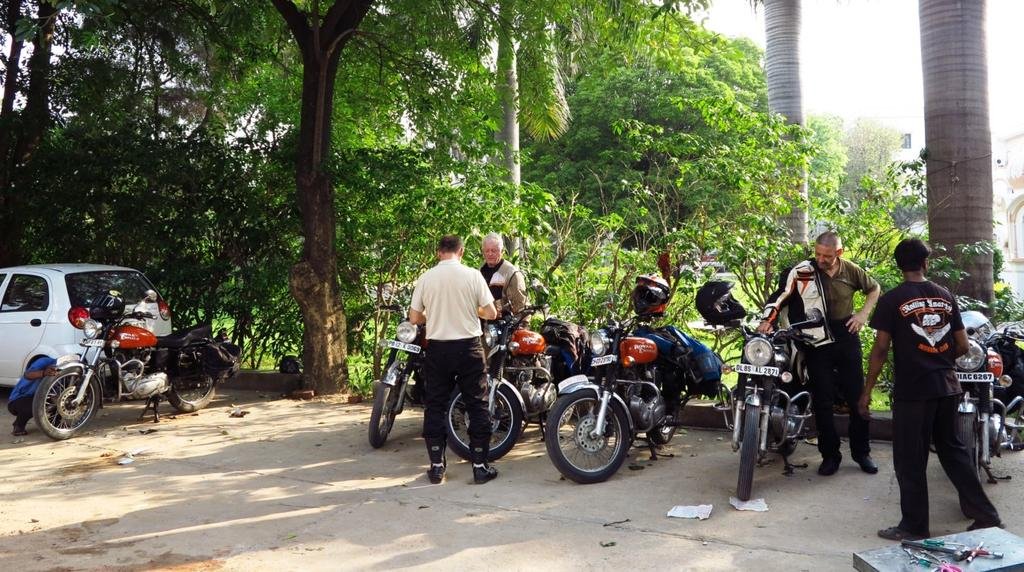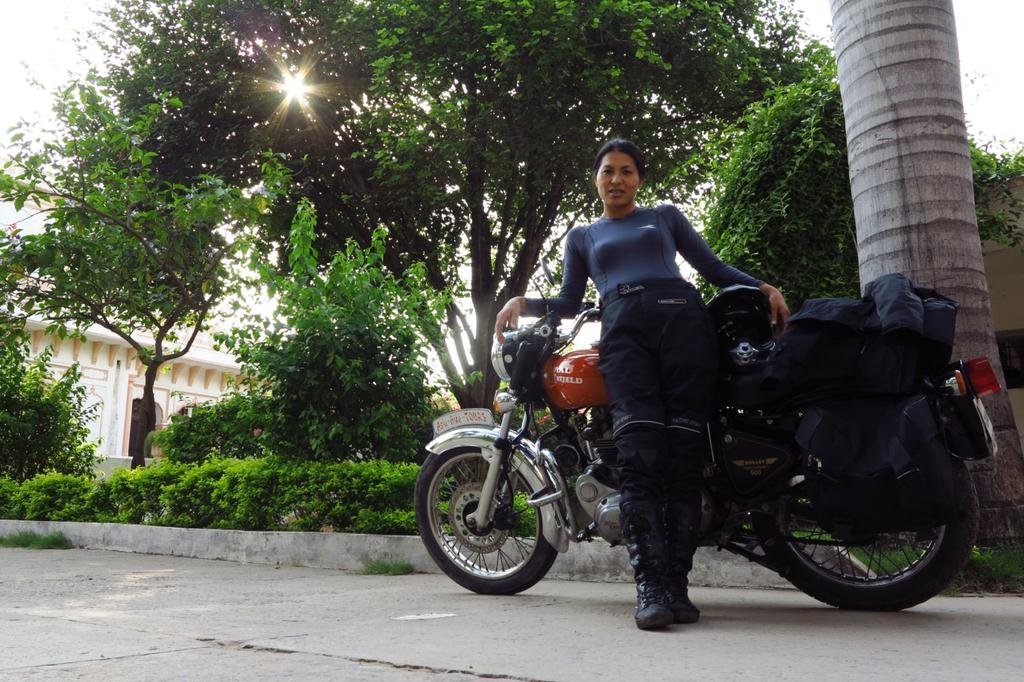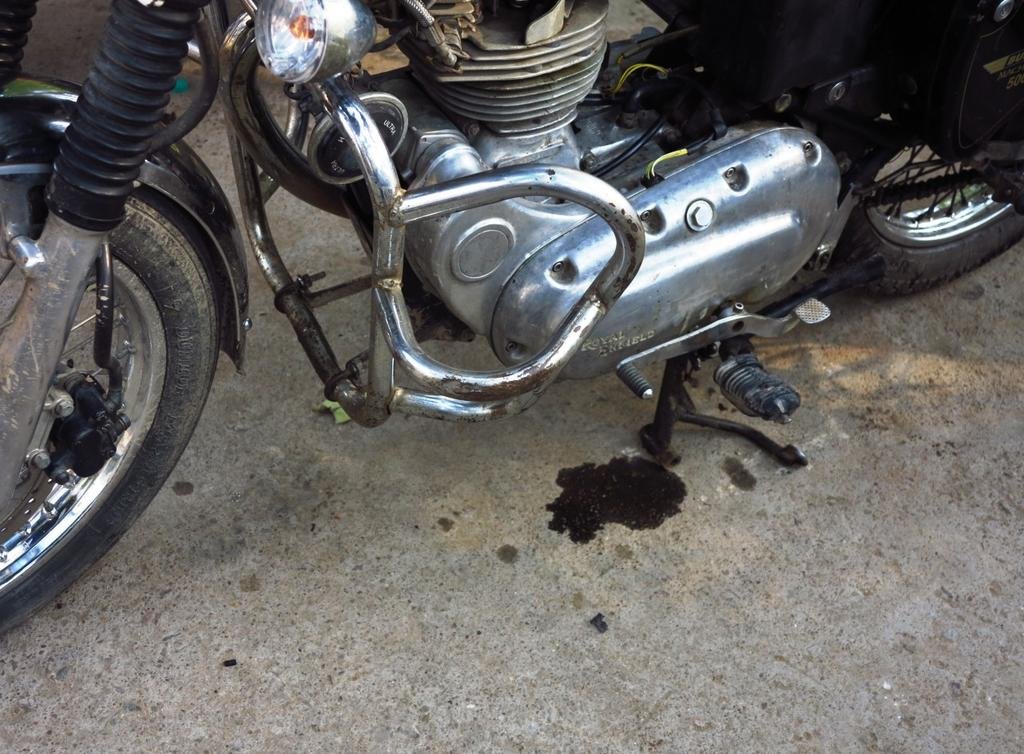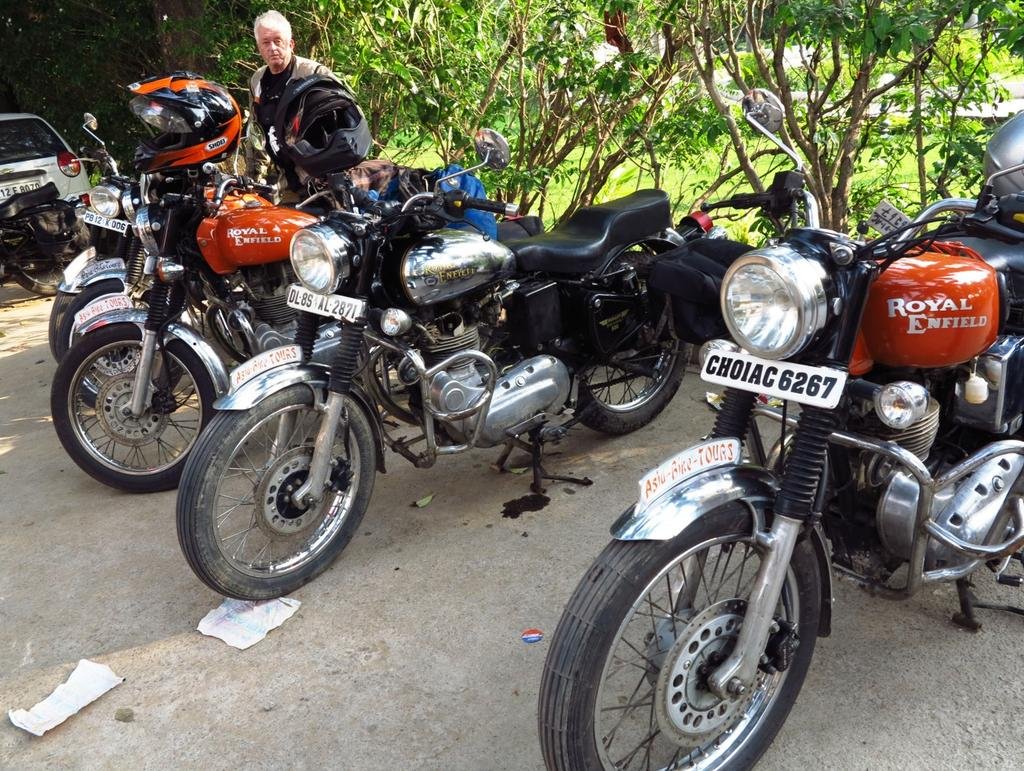You are using an out of date browser. It may not display this or other websites correctly.
You should upgrade or use an alternative browser.
You should upgrade or use an alternative browser.
A tour around north India on Royal Enfields
- Thread starter KTMphil
- Start date
KTMphil
Senior member
It looks like around day 3 above in the Shimla region there's some major flooding problems and the routing will need to be changed,
The Times of India:
SHIMLA: Around 220 stranded tourists, including foreign nationals were airlifted from Kinnaur district on Friday. However, around 800 remain stranded in different parts of the district. With the Indian Air Force (IAF) chopper rescuing just eight people on Friday, Himachal Pradesh Deputy Speaker and Kinnaur MLA Jagat Singh Negi was fuming once again.
"Another IAF chopper had carried 22 people from Sangla, while this (ZP5162) carried only eight tourists in one sortie and another eight in second (sortie). Had this chopper carried 22 people today, another 28 tourists could have been brought out of Kinnaur," he said. Not happy with the slow pace of rescue by IAF choppers, Negi has raised the issue of deploying more into service. "I have demanded five-six more choppers as a large number of tourists are still stranded in Kinnaur district. While 400 are in Sangla valley, over 300 are awaiting rescue in Peo. Besides, there are local residents of Kinnaur and Spiti," he said.


From the Deccan Chronicle:

Shimla: Nearly all tourists, including 14 Americans stranded in Sangla valley, Pooh and Nako area of Kinnaur district for the past nine days were evacuated by IAF choppers today, as rescue teams were racing against time due to fresh warning of heavy rains in many parts of the state.
The IAF choppers made sorties from Rampur to Sangla and other places and 97 persons, including 14 American and 46 tourists, were evacuated and dropped at Rampur. Six tourists were evacuated from Pooh and 15 from Nako while 44 persons were shifted between Pooh, Samdoh and Rekong Peo for onward transportation by road, an official spokesman said.
About 50 tourists were rescued from Sangla by a 14-member team of National Disaster Response Force. They were brought to Karchham through a trekking route. About 1,100 people have been airlifted from various places in the interior areas of tribal Kinnaur district, which were cut off by road for past nine days.
The Hindustan-Tibet National Highway was opened upto Rekong Peo yesterday and Himachal Road Transport Corporation (HRTC) resumed bus services today. With most of the tourists and outsiders evacuated from the rain ravaged district, focus has now been shifted on ferrying locals to their respective destinations.
Chief Minister Virbhadra Singh has directed the officials to restore road connectivity within the district. The Karchham-Sangla road has been badly damaged and would take a couple of weeks for restoration while the Border Roads Organisation and state Public Works department are working overtime to open the national highway, which was blocked due to landslides and road breaches at numerous points.
Meanwhile, several areas of Himachal Pradesh were lashed by heavy rains during the last 24 hours with Gohar and Jogindernagar in Mandi district receiving 133 mm and 92 mm of rains while Baijnath and Palampur had 76 mm and 74 mm rains, followed by, Sundernagar 49 mm, Karsog 48 mm, Bhoranj 47 mm, Pandoh Sujanpur Tira 46 mm, Nagrota Suriyan 40 mm, Baldwara 35 mm, Nadaun and Guler 34 mm, Dalhousie 32 mm, Dharamsala 30 mm, Chamba 22 mm, and Shimla 11.8 mm.
The maximum day temperatures dropped by one to two degree Celsius. Una was hottest in region with a high of 38.0 deg C, while Bhunter and Sundernagar recorded maximum temperatures at 31.2 deg C and 29.9 deg C, followed by Solan 29.4 deg C, Nahan 28.2 deg C, Dharamsala 26.8 degree, Kalpa 25.8 deg C and Shimla 25.0 deg C.
Una was hottest during night also with minimum temperature at 28.5 deg C, 7.5 deg C above normal while state capital Shimla and Manali recorded a low of 17 deg C and 16.2 deg C and Kalpa and Keylong in tribal Kinnaur and Lahual and Spiti recorded minimum temperature at 14.4 deg C and 15.1 deg C, 3.5 deg C above normal.
The local MeT office predicted heavy to very heavy rains in many parts of the state during next 72 hours.
This is the re-routing messages we are getting:
"re-routing our Spiti - Ladakh - Srinagar tour. Spiti valley areas shut off from traffic because of landslides caused by the most severe Monsoon rains in 60years."
More to come .....
The Times of India:
SHIMLA: Around 220 stranded tourists, including foreign nationals were airlifted from Kinnaur district on Friday. However, around 800 remain stranded in different parts of the district. With the Indian Air Force (IAF) chopper rescuing just eight people on Friday, Himachal Pradesh Deputy Speaker and Kinnaur MLA Jagat Singh Negi was fuming once again.
"Another IAF chopper had carried 22 people from Sangla, while this (ZP5162) carried only eight tourists in one sortie and another eight in second (sortie). Had this chopper carried 22 people today, another 28 tourists could have been brought out of Kinnaur," he said. Not happy with the slow pace of rescue by IAF choppers, Negi has raised the issue of deploying more into service. "I have demanded five-six more choppers as a large number of tourists are still stranded in Kinnaur district. While 400 are in Sangla valley, over 300 are awaiting rescue in Peo. Besides, there are local residents of Kinnaur and Spiti," he said.

From the Deccan Chronicle:

Shimla: Nearly all tourists, including 14 Americans stranded in Sangla valley, Pooh and Nako area of Kinnaur district for the past nine days were evacuated by IAF choppers today, as rescue teams were racing against time due to fresh warning of heavy rains in many parts of the state.
The IAF choppers made sorties from Rampur to Sangla and other places and 97 persons, including 14 American and 46 tourists, were evacuated and dropped at Rampur. Six tourists were evacuated from Pooh and 15 from Nako while 44 persons were shifted between Pooh, Samdoh and Rekong Peo for onward transportation by road, an official spokesman said.
About 50 tourists were rescued from Sangla by a 14-member team of National Disaster Response Force. They were brought to Karchham through a trekking route. About 1,100 people have been airlifted from various places in the interior areas of tribal Kinnaur district, which were cut off by road for past nine days.
The Hindustan-Tibet National Highway was opened upto Rekong Peo yesterday and Himachal Road Transport Corporation (HRTC) resumed bus services today. With most of the tourists and outsiders evacuated from the rain ravaged district, focus has now been shifted on ferrying locals to their respective destinations.
Chief Minister Virbhadra Singh has directed the officials to restore road connectivity within the district. The Karchham-Sangla road has been badly damaged and would take a couple of weeks for restoration while the Border Roads Organisation and state Public Works department are working overtime to open the national highway, which was blocked due to landslides and road breaches at numerous points.
Meanwhile, several areas of Himachal Pradesh were lashed by heavy rains during the last 24 hours with Gohar and Jogindernagar in Mandi district receiving 133 mm and 92 mm of rains while Baijnath and Palampur had 76 mm and 74 mm rains, followed by, Sundernagar 49 mm, Karsog 48 mm, Bhoranj 47 mm, Pandoh Sujanpur Tira 46 mm, Nagrota Suriyan 40 mm, Baldwara 35 mm, Nadaun and Guler 34 mm, Dalhousie 32 mm, Dharamsala 30 mm, Chamba 22 mm, and Shimla 11.8 mm.
The maximum day temperatures dropped by one to two degree Celsius. Una was hottest in region with a high of 38.0 deg C, while Bhunter and Sundernagar recorded maximum temperatures at 31.2 deg C and 29.9 deg C, followed by Solan 29.4 deg C, Nahan 28.2 deg C, Dharamsala 26.8 degree, Kalpa 25.8 deg C and Shimla 25.0 deg C.
Una was hottest during night also with minimum temperature at 28.5 deg C, 7.5 deg C above normal while state capital Shimla and Manali recorded a low of 17 deg C and 16.2 deg C and Kalpa and Keylong in tribal Kinnaur and Lahual and Spiti recorded minimum temperature at 14.4 deg C and 15.1 deg C, 3.5 deg C above normal.
The local MeT office predicted heavy to very heavy rains in many parts of the state during next 72 hours.
This is the re-routing messages we are getting:
"re-routing our Spiti - Ladakh - Srinagar tour. Spiti valley areas shut off from traffic because of landslides caused by the most severe Monsoon rains in 60years."
More to come .....
KTMphil
Senior member
Have fun kicking Soms bike over for her every day.
A couple from here did something similar.
Todd was saying he drank free for three weeks as Jeffs uncle couldn't kick his bike over, so Todd did it for him, at a cost
Crusty Quinns
A couple from here did something similar.
Todd was saying he drank free for three weeks as Jeffs uncle couldn't kick his bike over, so Todd did it for him, at a cost
Crusty Quinns
KTMphil
Senior member
These are new ones, everything the right way around and the magic button.
Have fun kicking Soms bike over for her every day.
A couple from here did something similar.
Todd was saying he drank free for three weeks as Jeffs uncle couldn't kick his bike over, so Todd did it for him, at a cost
Crusty Quinns
- Joined
- Aug 15, 2012
- Bikes
- KTM 613 EXC, BMW R90S & Dakar, MZ250, Norton 16H, Honda - 500 Fs & Xs, DRZs, XLs XRs CRFs CT110s etc
Looks like a lot of fun, Phillip. My daughter was in the Kashmir region a couple of years ago and loved it.
2wheels
Community Manager
Hope it all goes well Phil and K Som.
Looking forward to this report!
Looking forward to this report!
LivinLOS
Senior Member
- Joined
- Feb 10, 2011
- Bikes
- Gas Gas 250 (Trials), YZ250 (enduro), DRZ440 (Supermoto) CBR900 Streetfighter (scary !!)
Buddies did the old oil leakers onto the worlds highest highway pass etc..
I enjoyed my indian adventure but it was tinged with love hate by the end of the trip..
I enjoyed my indian adventure but it was tinged with love hate by the end of the trip..
Captain_Slash
Community Manager
- Joined
- Jun 28, 2011
- Bikes
- BMW 310GS Honda Wave 125 Honda MSX 125
Good luck with it Phil, when does your trip start?
KTMphil
Senior member
Good luck with it Phil, when does your trip start?
Next week Colin
johnnysneds
Senior Member
- Joined
- May 14, 2011
- Location
- Chiang Mai
- Bikes
- Multistrada 1200S Touring, WR450F, KTM200EXC, Gas Gas 280, PCX
Phil, your going to be the most travelled man by motorcycle in SE Asia soon...
Good luck to you and Som on yer India trip.
I envisage some awesome Vindaloos coming your way'
Good luck to you and Som on yer India trip.
I envisage some awesome Vindaloos coming your way'
KTMphil
Senior member
Phil, your going to be the most travelled man by motorcycle in SE Asia soon...
Good luck to you and Som on yer India trip.
I envisage some awesome Vindaloos coming your way'
I'm sure we'll be sick of curry's by the time we get back
Phil
skeedary
Senior Member
I loved the trip when I did it a few years ago but a shame that it has been modified for you due to the bad weather. Some advice that I was given is don't rush it, take it all in and take many photos. Seems like it will be a little rougher due to the monsoonal wet but you are both good riders. Enjoy it as I know you both will.
bsacbob
Administrator (Retired)
- Joined
- Jul 1, 2012
- Location
- Chiang Rai
- Bikes
- Honda CRM-AR 250, Honda CRF 250-L, Suzuki V Strom XT 650 Honda XR250 Baja BMW F650GS
I dunno, a nice Vindaloo or Rogan Josh would be a nice addition to the RC menuI'm sure we'll be sick of curry's by the time we get back
Phil
WarProfiteer
Senior Member
- Joined
- May 17, 2013
- Bikes
- currently renting & deciding
Best wishes on your ride, Phil. Looking forward to the trip report & pix...
KTMphil
Senior member
Easy 4 hour flight to Delhi, India from Bangkok, Thailand, i found out later that Heindrick got his flight one way for 3,000 Bht, amazing value. Paid 45 Rupees more for an aircon taxi from Delhi airport, this tiny thing didn't have a fan let alone aircon, made us laugh!
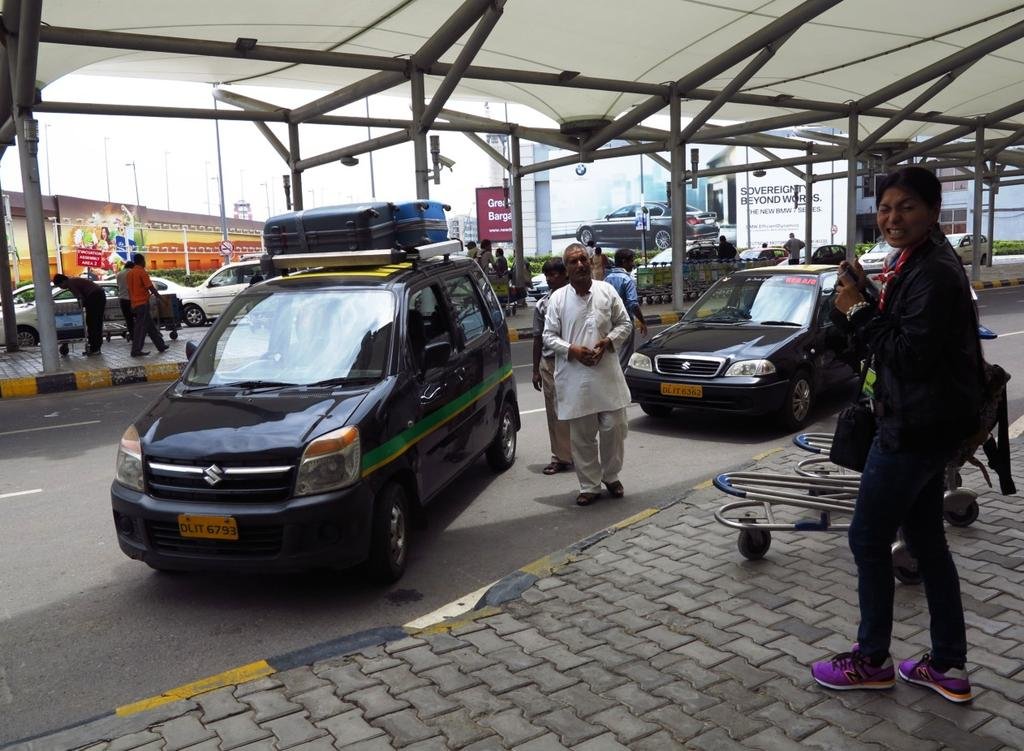
30 minutes and 400 Rupess later & we're at the Florence Inn, in the the center of Delhi, India. Hotter than hell, good aircon in the room thank God.
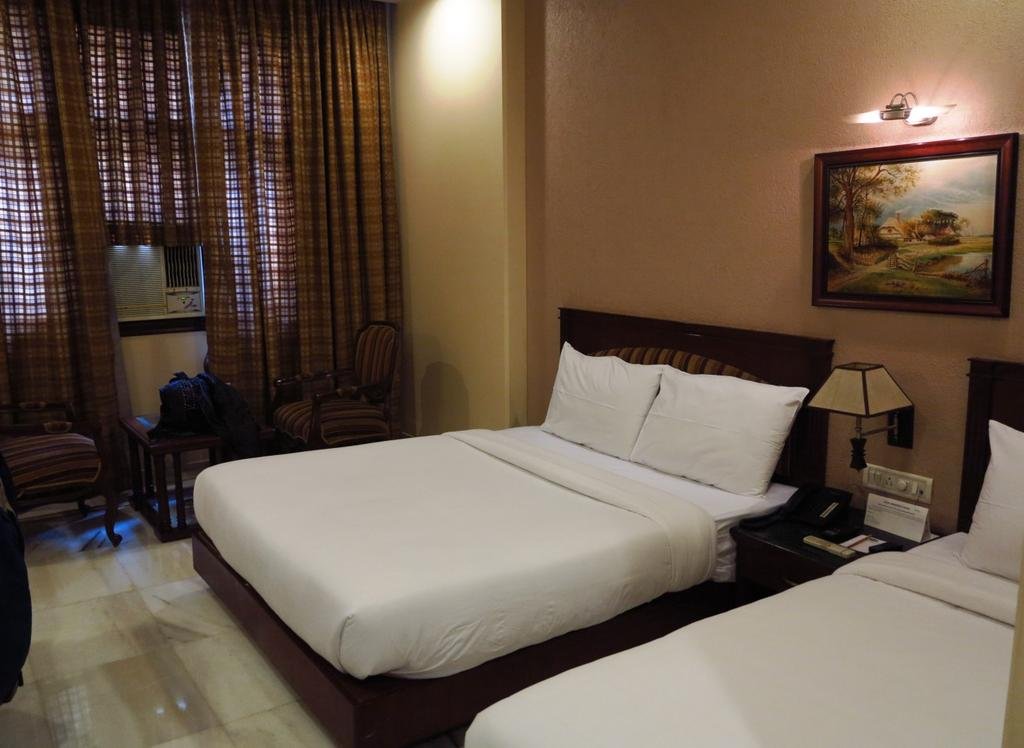
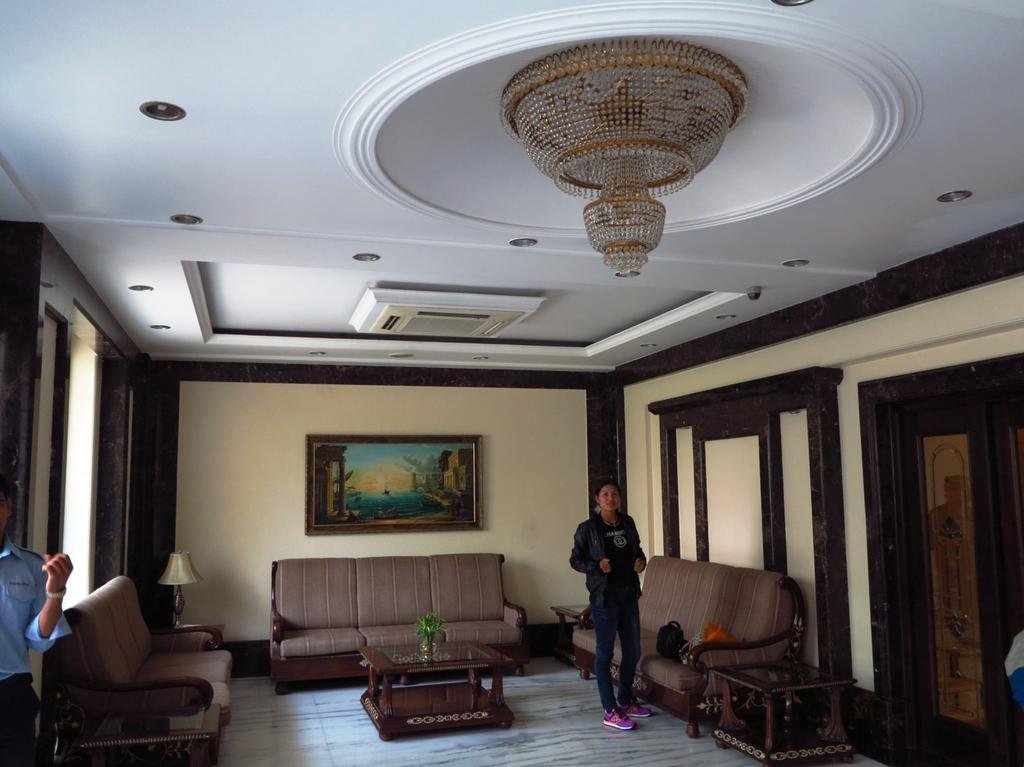
An Indian chap in Dehli, getting his vegetables from the market, that didn't mind having his photo taken
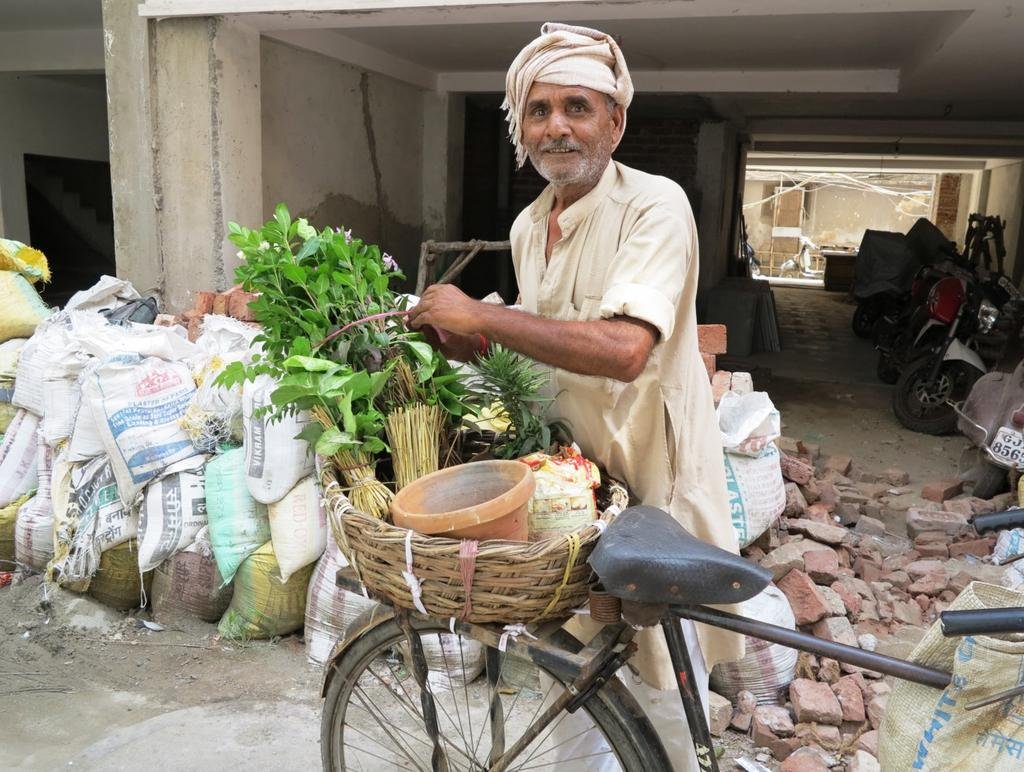

30 minutes and 400 Rupess later & we're at the Florence Inn, in the the center of Delhi, India. Hotter than hell, good aircon in the room thank God.


An Indian chap in Dehli, getting his vegetables from the market, that didn't mind having his photo taken

KTMphil
Senior member
We were fascinated to see if the "western style" Indian food was anything like authentic Indian cooking & there wasn't much difference at all. The nan bread was a little different apart from that maybe a little more spicy hot.
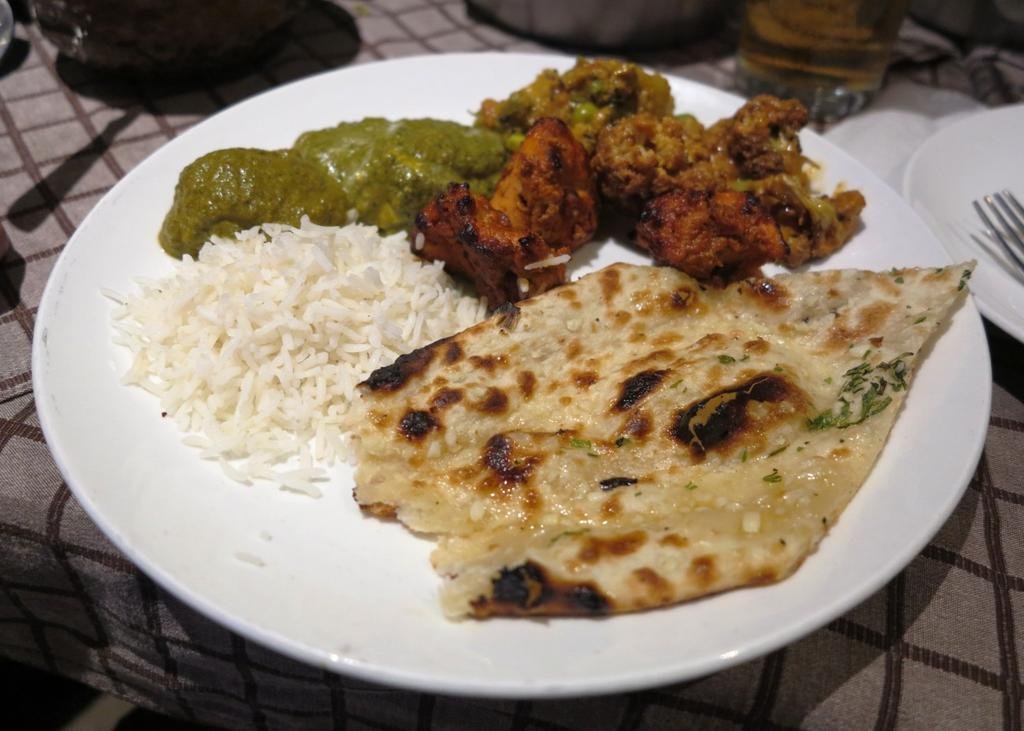
Out and about around Delhi and we manage to find the motorcycle section in the monstrous open air market--- thousands and thousand of bikes for sale as far as the eye can see.
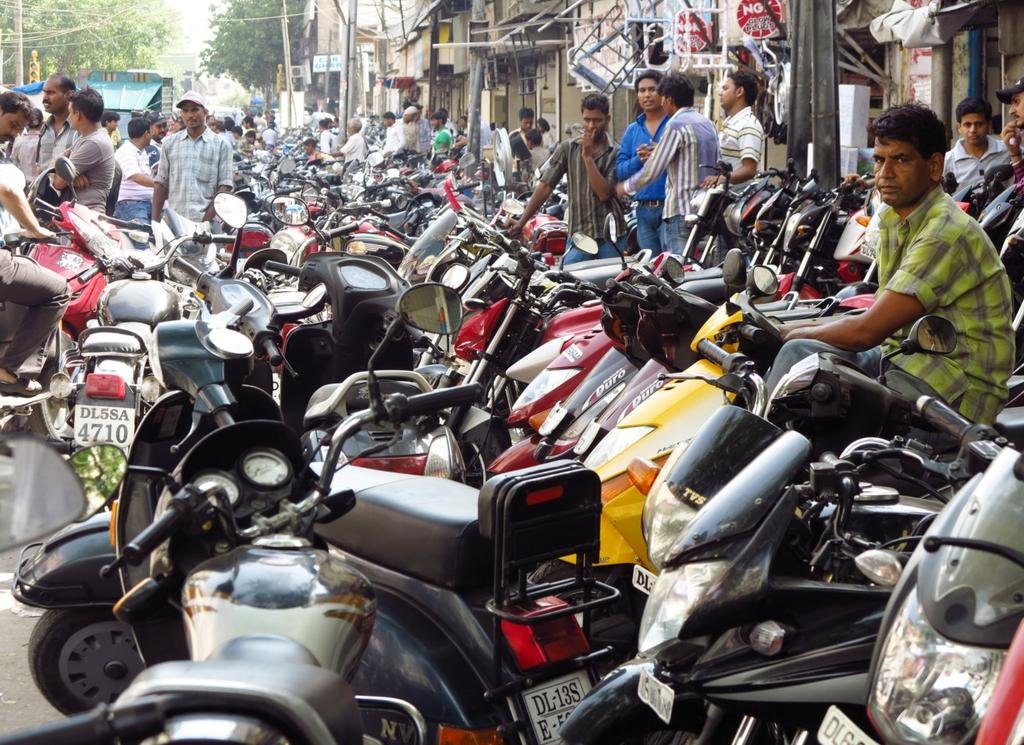
100's of Royal Enfields for sale, many more than we expected
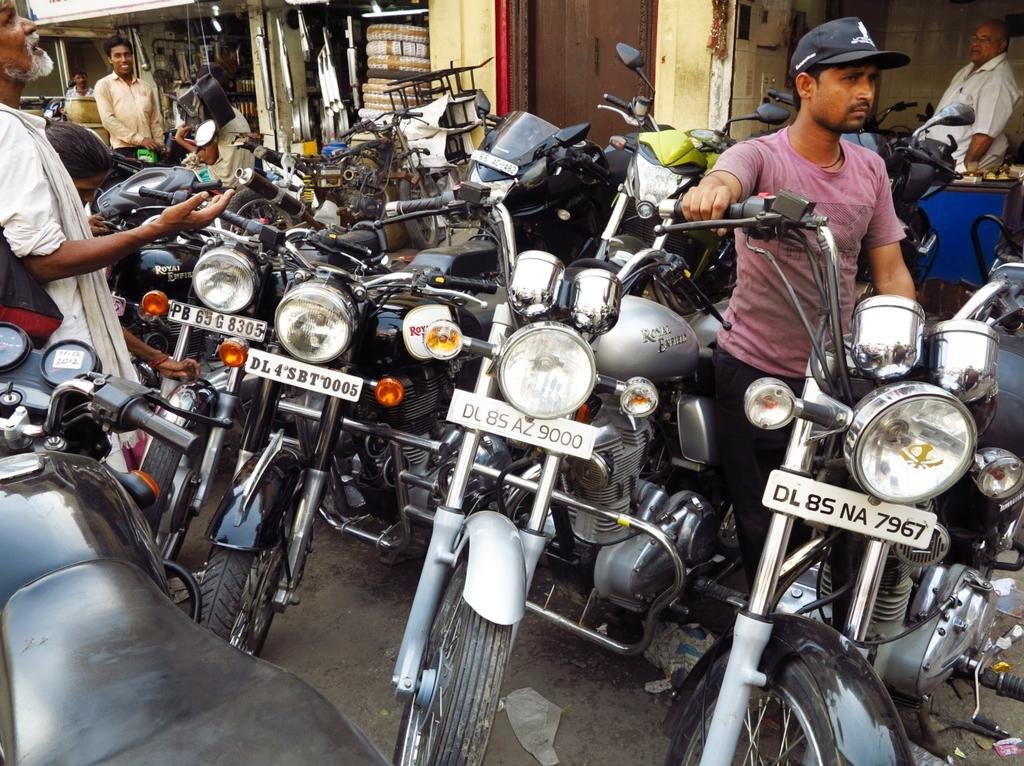
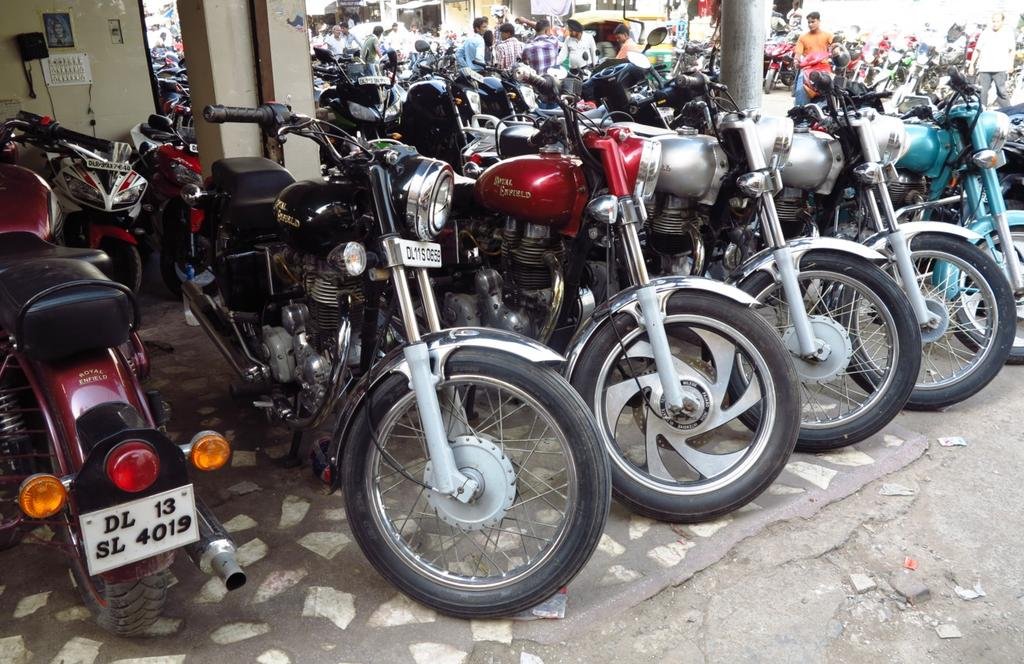
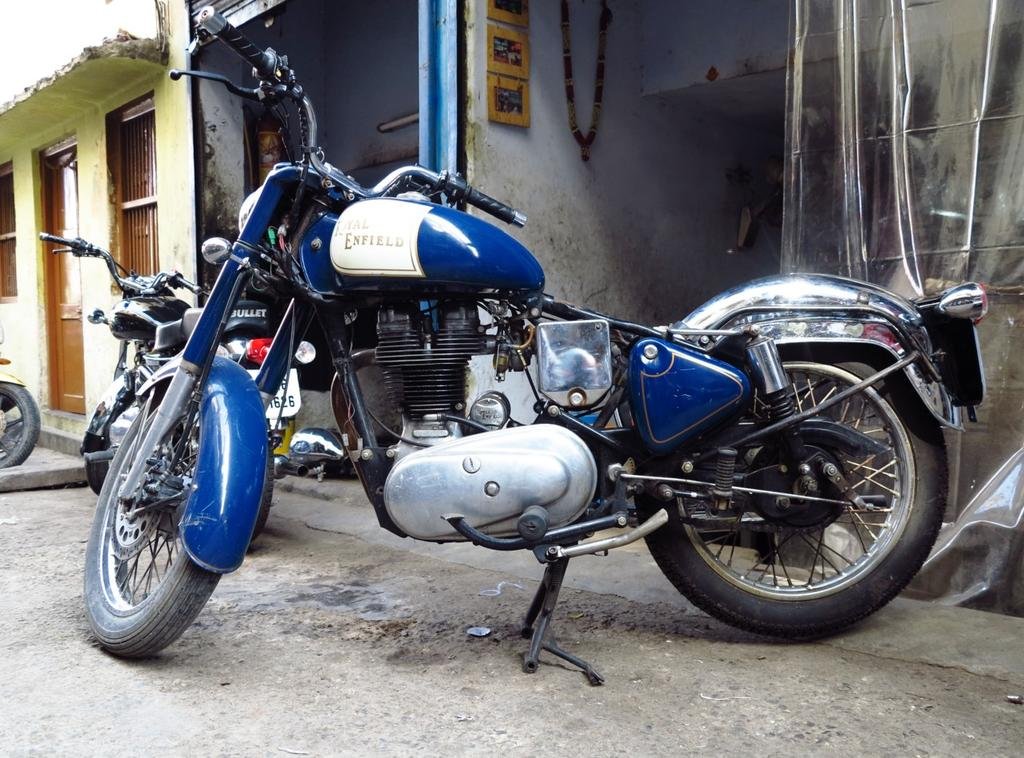

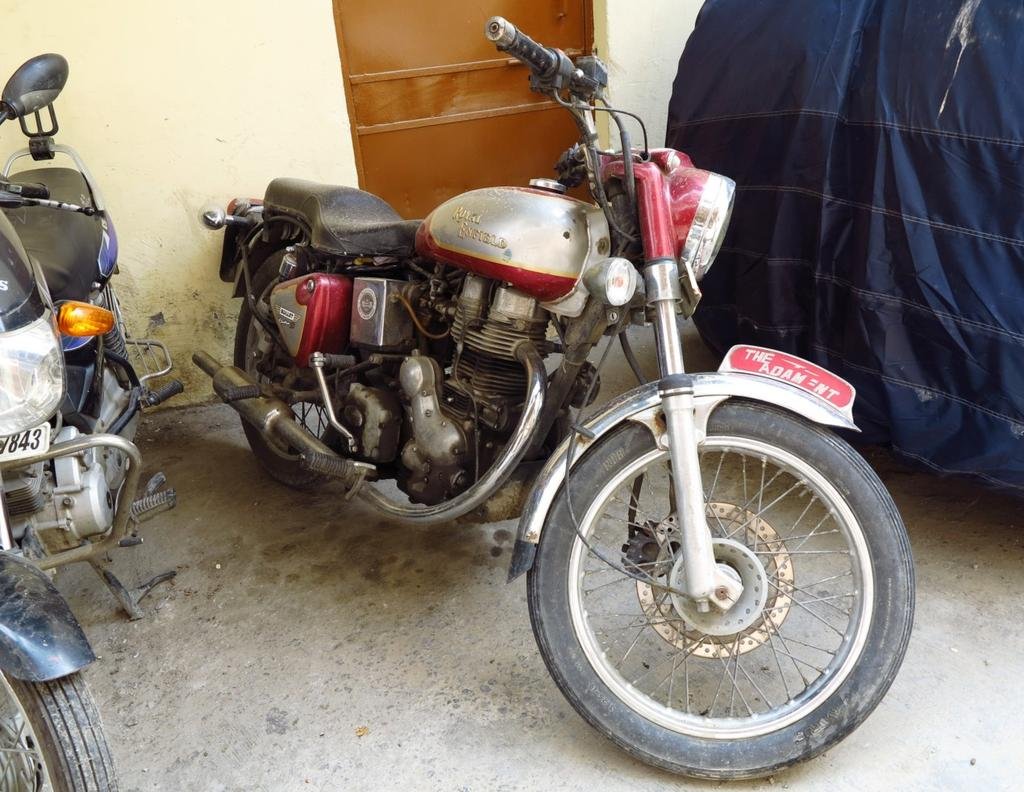
A mad repair shop buzzing with activity
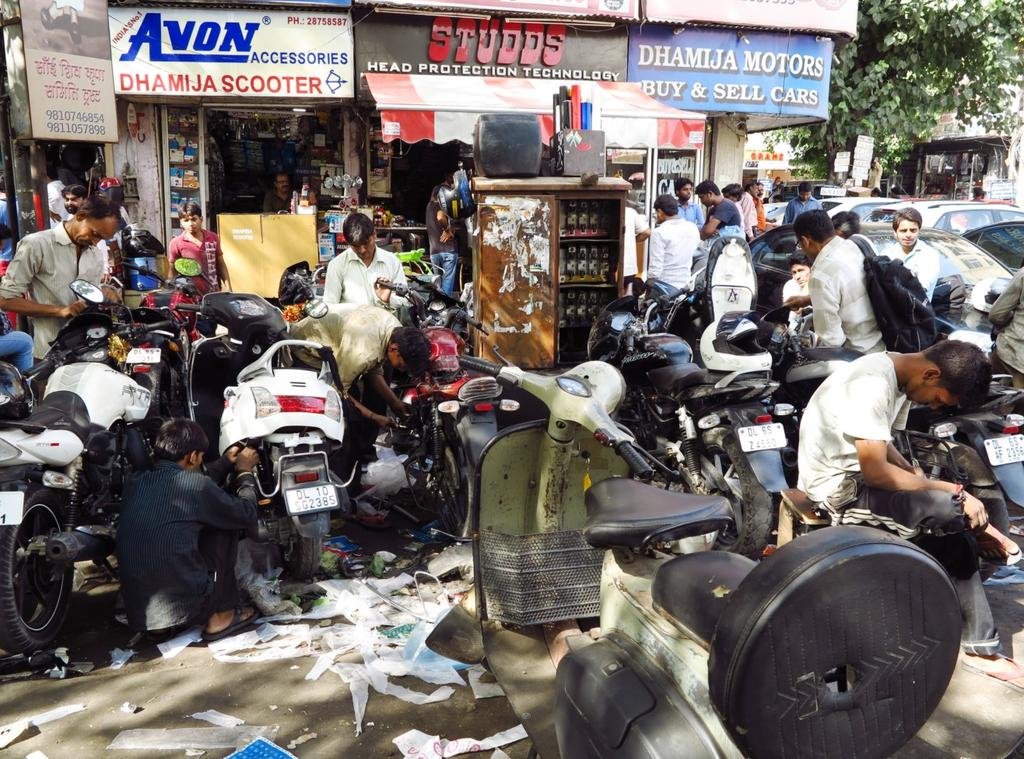
One of the Aladdin's cave motor shops hidden away, this place was priceless, organized chaos
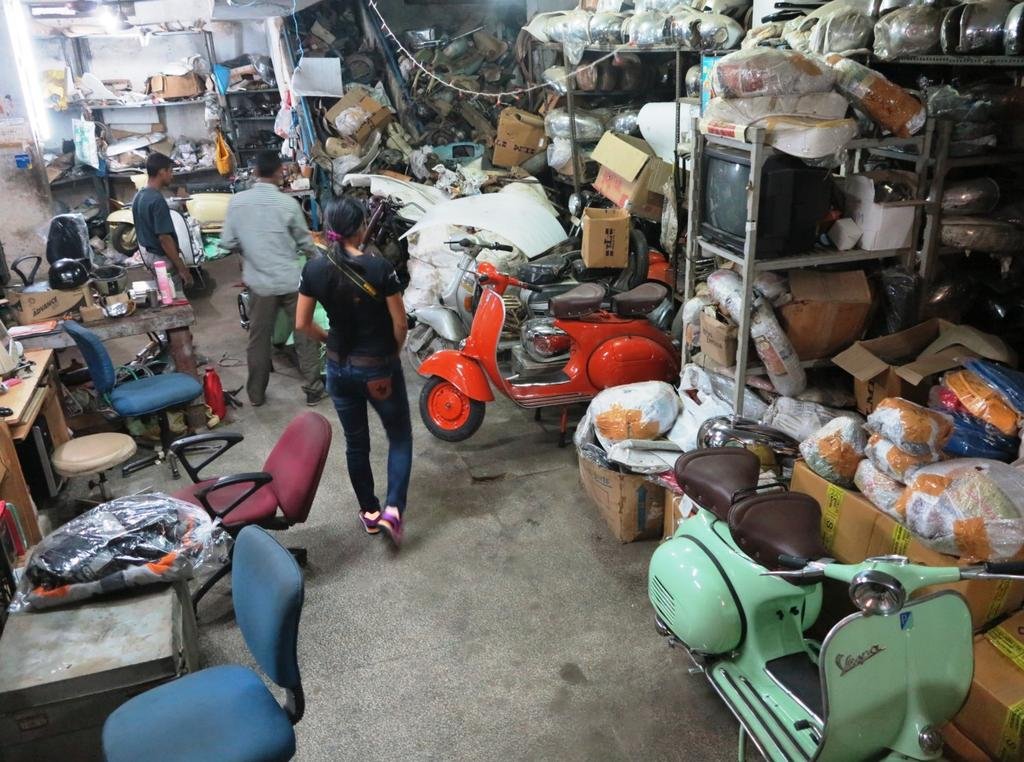
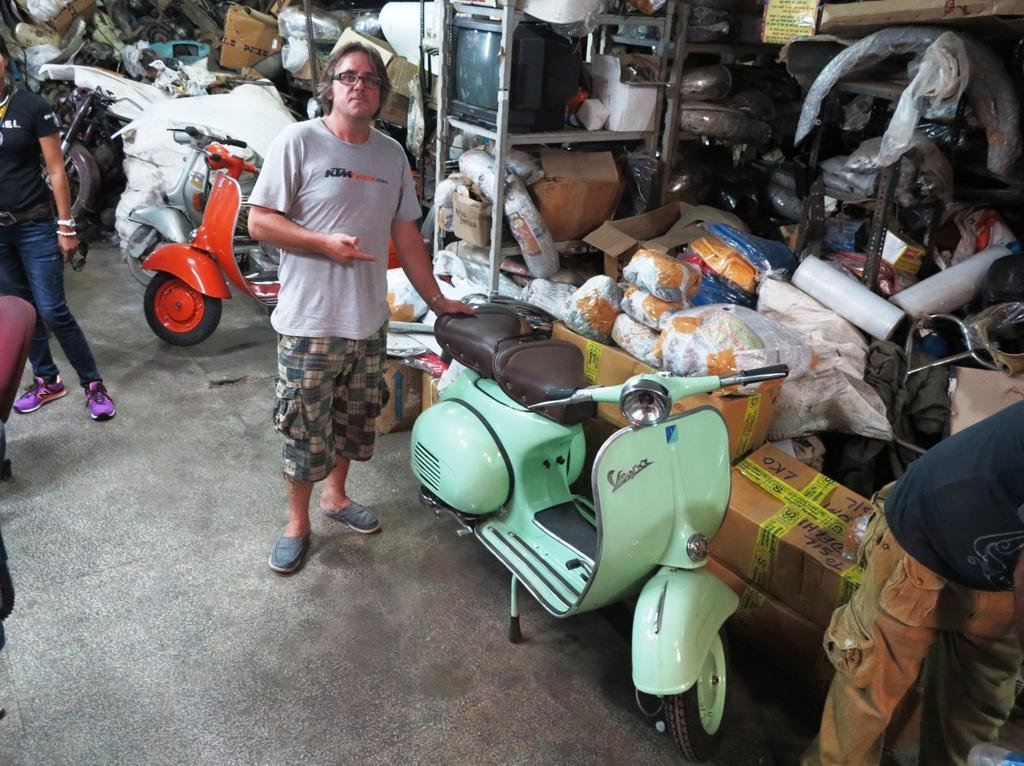
Great minds think alike
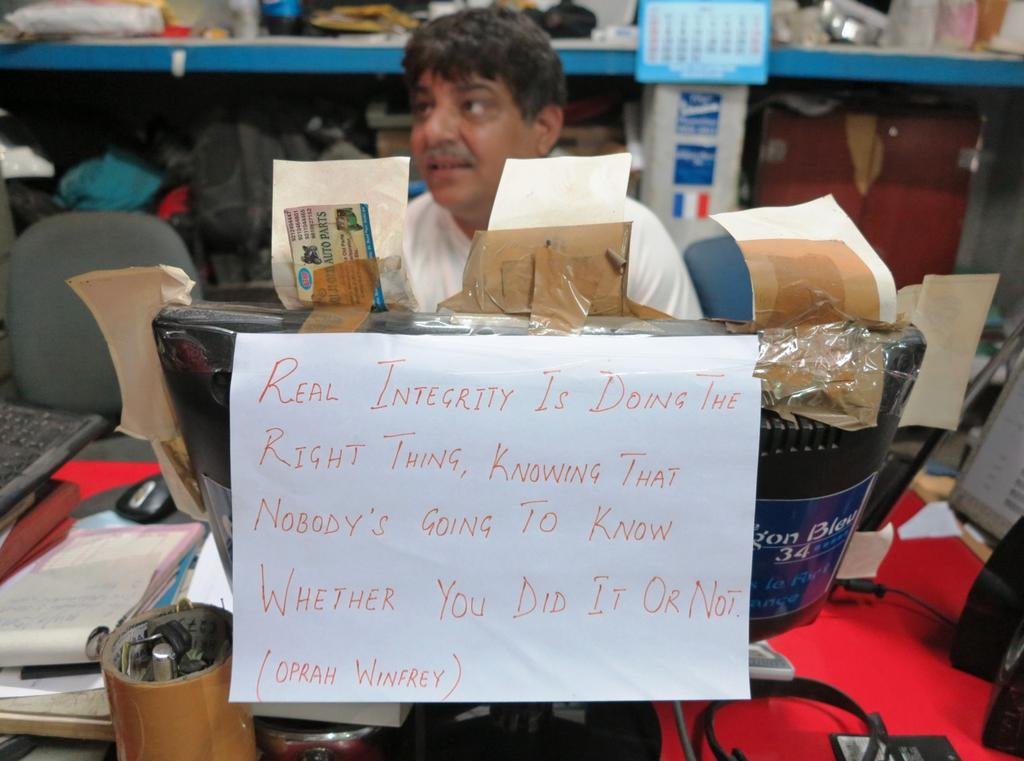
This was a 1964 Vespa that had been restored, you can buy the twin seats in leather in Delhi for 2,400 bht
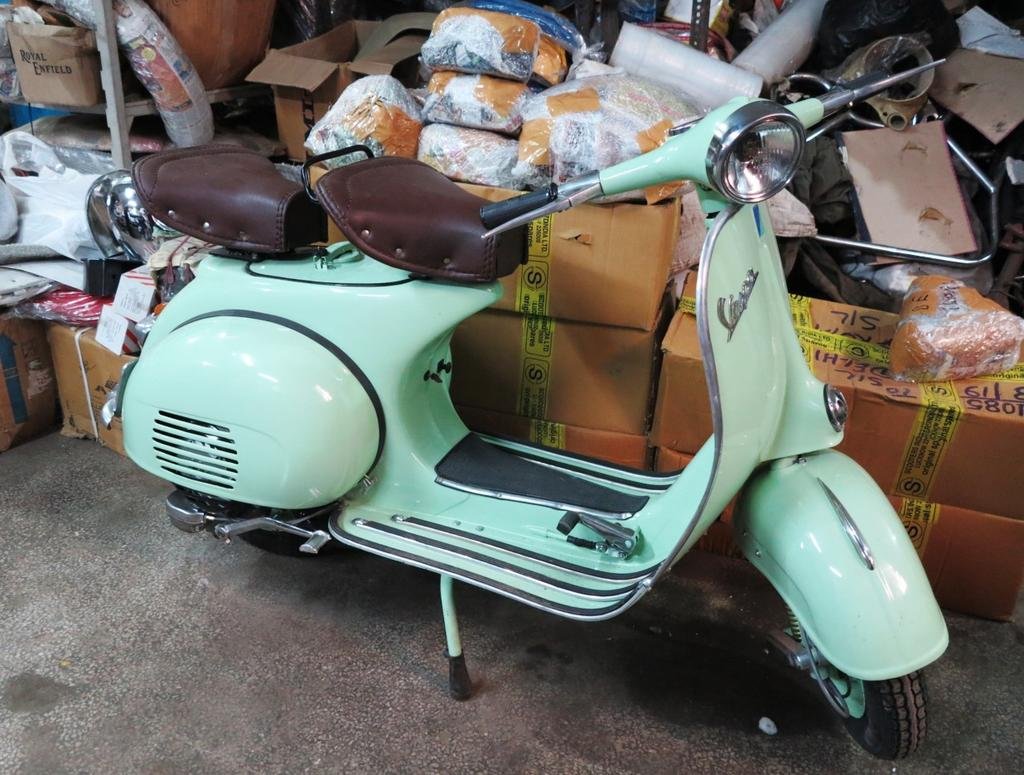
A 1943 BSA he had tucked away
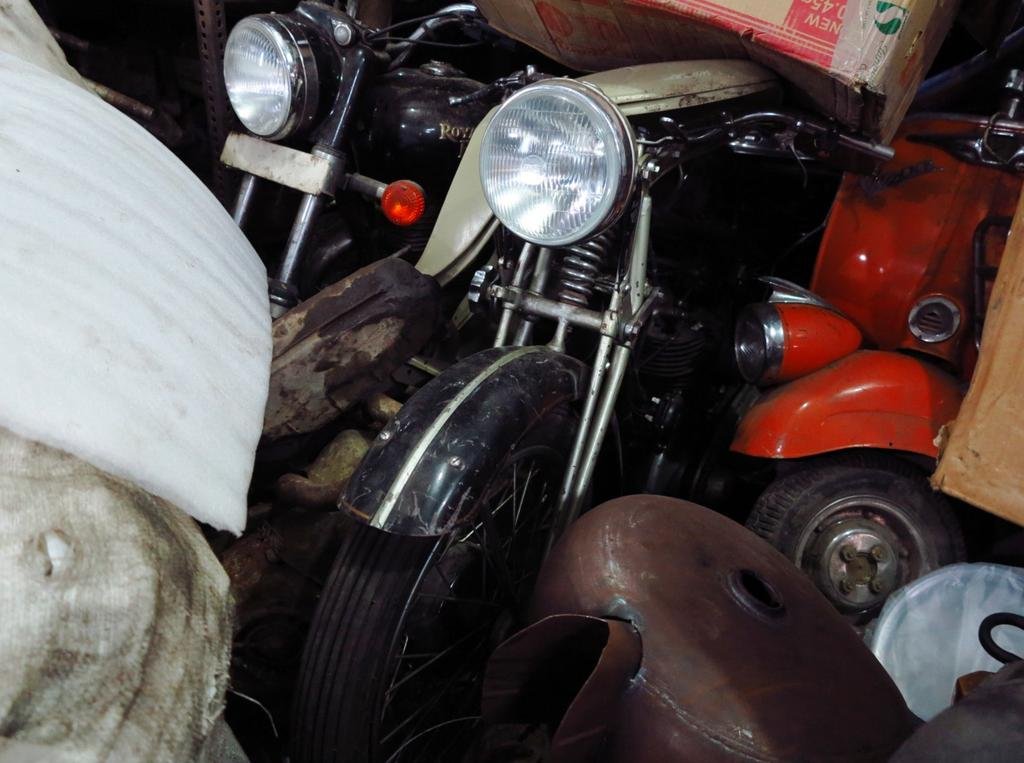
The fuel tanks get turned over regularly , normally more than 5 in week
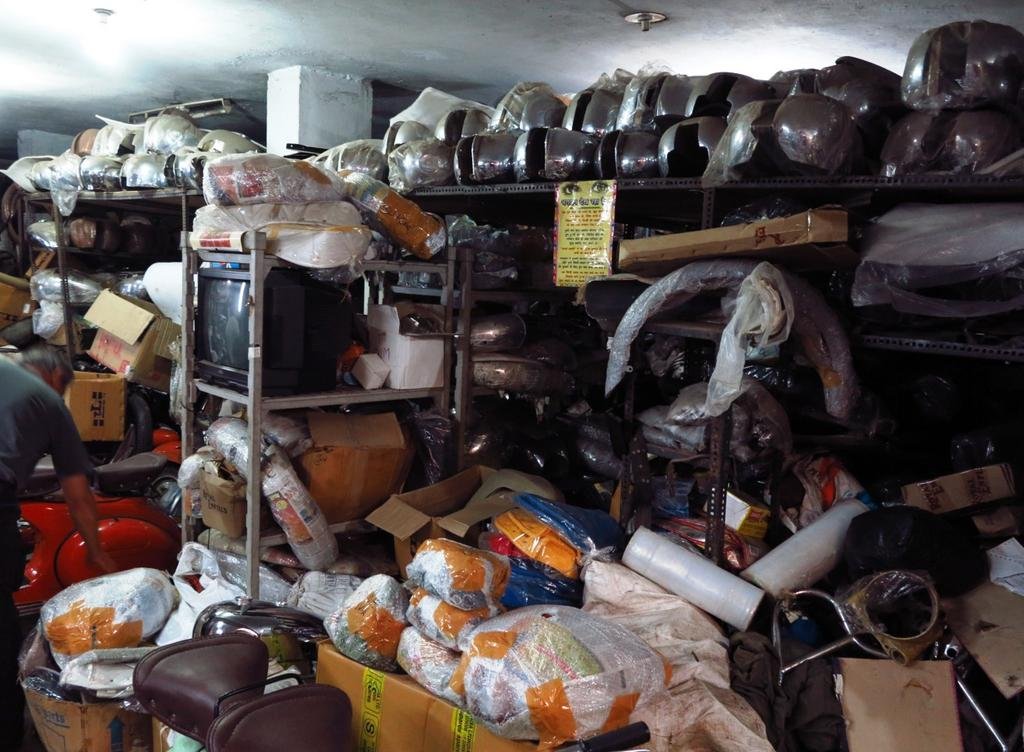
Our very first chayawalla tea boy, the tea is very sweet
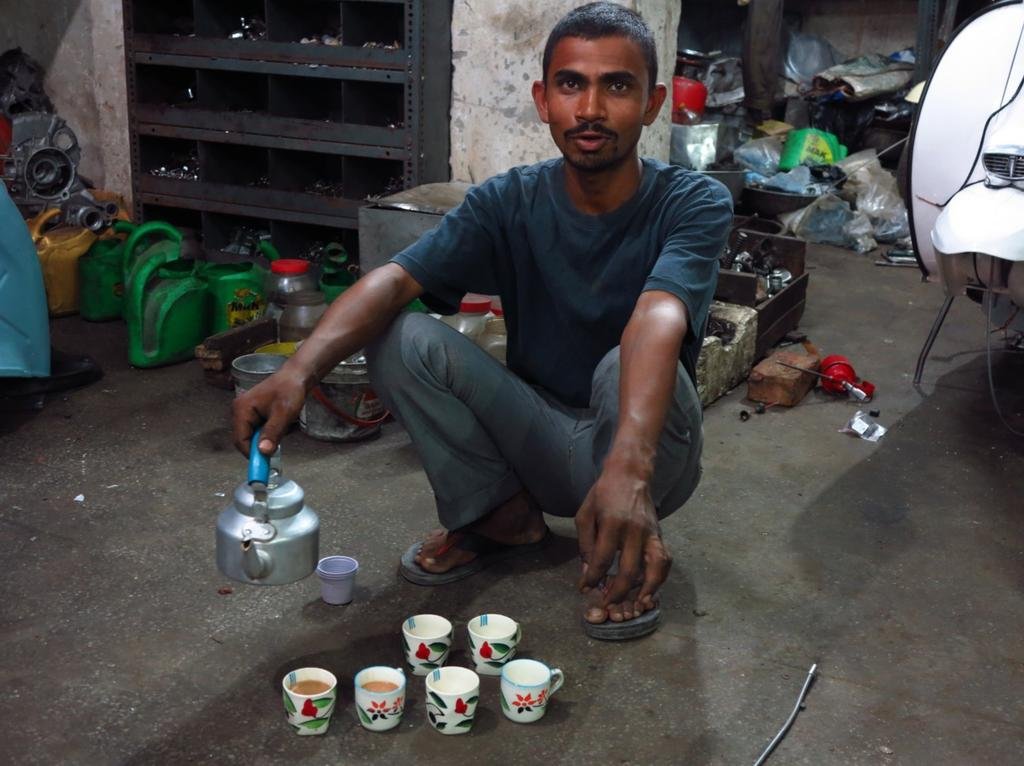

Out and about around Delhi and we manage to find the motorcycle section in the monstrous open air market--- thousands and thousand of bikes for sale as far as the eye can see.

100's of Royal Enfields for sale, many more than we expected





A mad repair shop buzzing with activity

One of the Aladdin's cave motor shops hidden away, this place was priceless, organized chaos


Great minds think alike

This was a 1964 Vespa that had been restored, you can buy the twin seats in leather in Delhi for 2,400 bht

A 1943 BSA he had tucked away

The fuel tanks get turned over regularly , normally more than 5 in week

Our very first chayawalla tea boy, the tea is very sweet

Ally
Well-known member
Great stuff 
Thanks for the pics
Ally

Thanks for the pics
Ally
KTMphil
Senior member
Bloody slow internet here in Nalaga north of Delhi!
KTMphil
Senior member
KTMphil
Senior member
...more to come (off out testing the Enfields for the first time now)
bsacbob
Administrator (Retired)
- Joined
- Jul 1, 2012
- Location
- Chiang Rai
- Bikes
- Honda CRM-AR 250, Honda CRF 250-L, Suzuki V Strom XT 650 Honda XR250 Baja BMW F650GS
Hard to believe the total transformation of culture in such a short flight, those Enfields look sweet, pity they are a bag of shite to ride to ride, can i make my curry take-away oder now please !!!
- Joined
- Aug 15, 2012
- Bikes
- KTM 613 EXC, BMW R90S & Dakar, MZ250, Norton 16H, Honda - 500 Fs & Xs, DRZs, XLs XRs CRFs CT110s etc
Great stuff Phil, as usual.
Get any prices on the second hand bikes? Royal Enfield 500, Vespa?
Get any prices on the second hand bikes? Royal Enfield 500, Vespa?
Here's mine, a 1993 RE 500 Bullet Classic, it is a twin spark conversion.
After her years of wintersleep the technical work was done and I will do the cosmetic TLC the next months while in Holland.
Maybe I will bring her in a box to the Rai, would be a lovely area for her!

Will keep you updated on trips to the beach and her beauty make over :-)
After her years of wintersleep the technical work was done and I will do the cosmetic TLC the next months while in Holland.
Maybe I will bring her in a box to the Rai, would be a lovely area for her!

Will keep you updated on trips to the beach and her beauty make over :-)
KTMphil
Senior member
What a beauty Marcel!
KTMphil
Senior member
Great stuff Phil, as usual.
Get any prices on the second hand bikes? Royal Enfield 500, Vespa?
I'll get you prices, I think a new Enfield 500 Bullet is 76,000 Bht roughly, I'll check on the Vespa's
Consider there is a difference between the products RE manufactures for export and domestic markets!
Basically the design is the same but components (like bearings, seals etc) for export models are of a higher standard then for the domestic ones.
Basically the design is the same but components (like bearings, seals etc) for export models are of a higher standard then for the domestic ones.
2wheels
Community Manager
This is already good and it's going to get even better!
Would love to know Khun Som's take on it all as you go along your adventure.
Not many Thai ladies do what she's about to do.
Would love to know Khun Som's take on it all as you go along your adventure.
Not many Thai ladies do what she's about to do.

KTMphil
Senior member
2W -- She's keeping a daily diary so I think she'll have something for us, I'll be interested in reading it too.
This is already good and it's going to get even better!
Would love to know Khun Som's take on it all as you go along your adventure.
Not many Thai ladies do what she's about to do.
KTMphil
Senior member
KTMphil
Senior member
The next morning, 0700am departure from Delhi, trying to fit all the luggage into the car from 8 riders
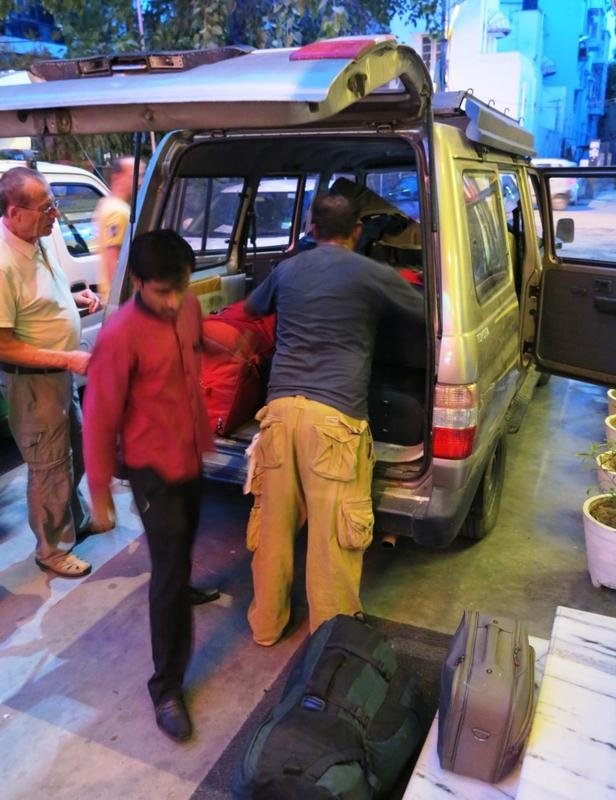
Then find the Delhi metro station to get the train 4 hours north to Kalka, lots of people sleeping all around in the station
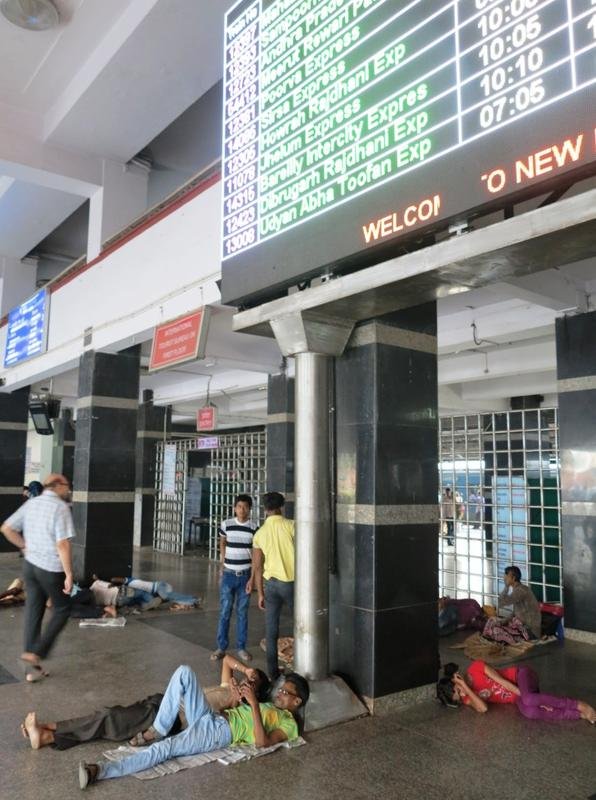
Crazy as you'd expect
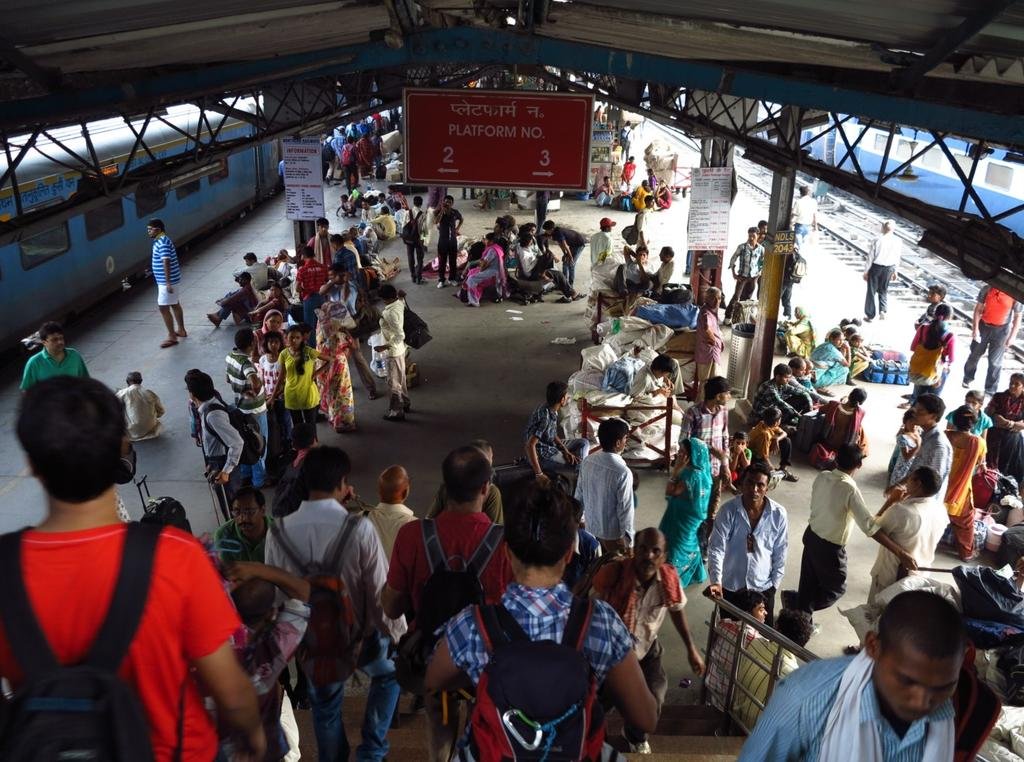
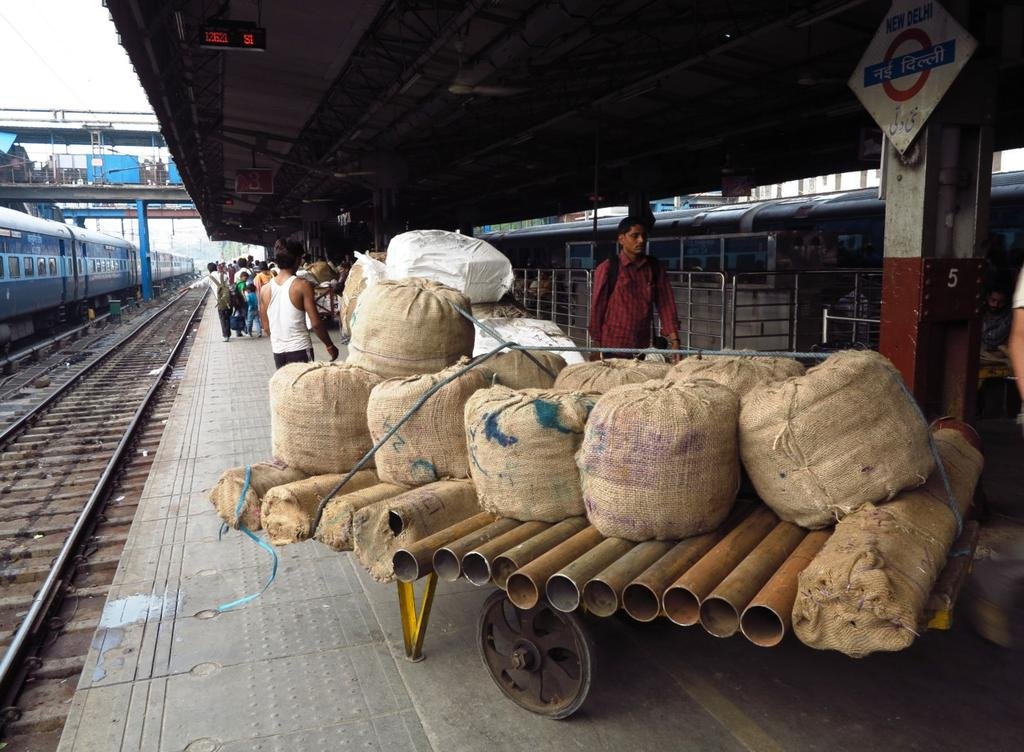
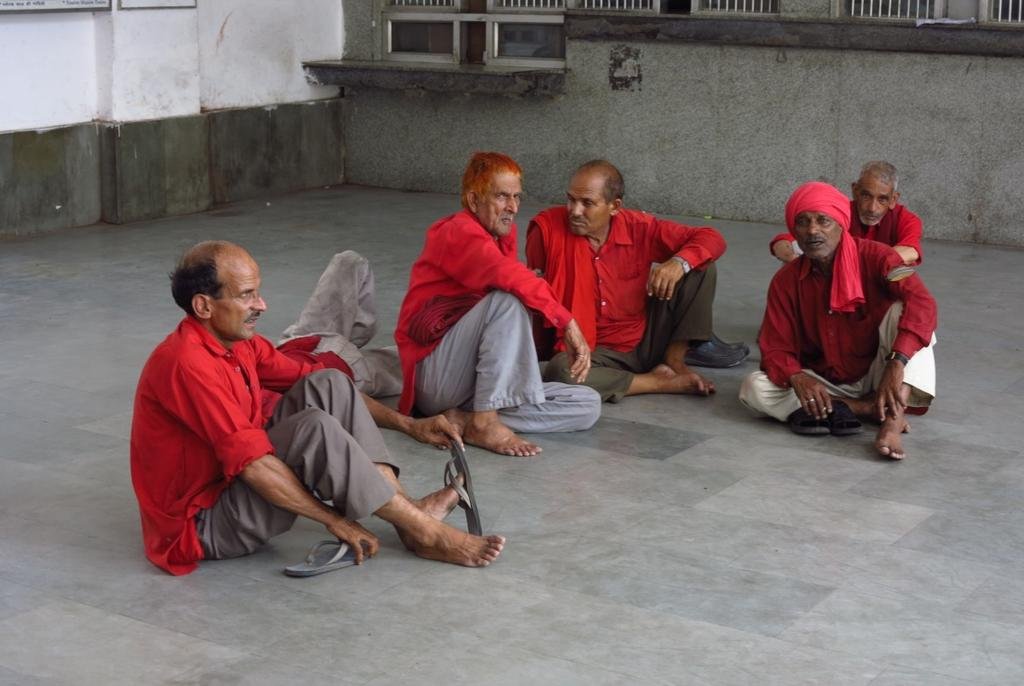
The train wasn't so bad, they served as much tea as you wanted, the chayawalla below bringing more tea
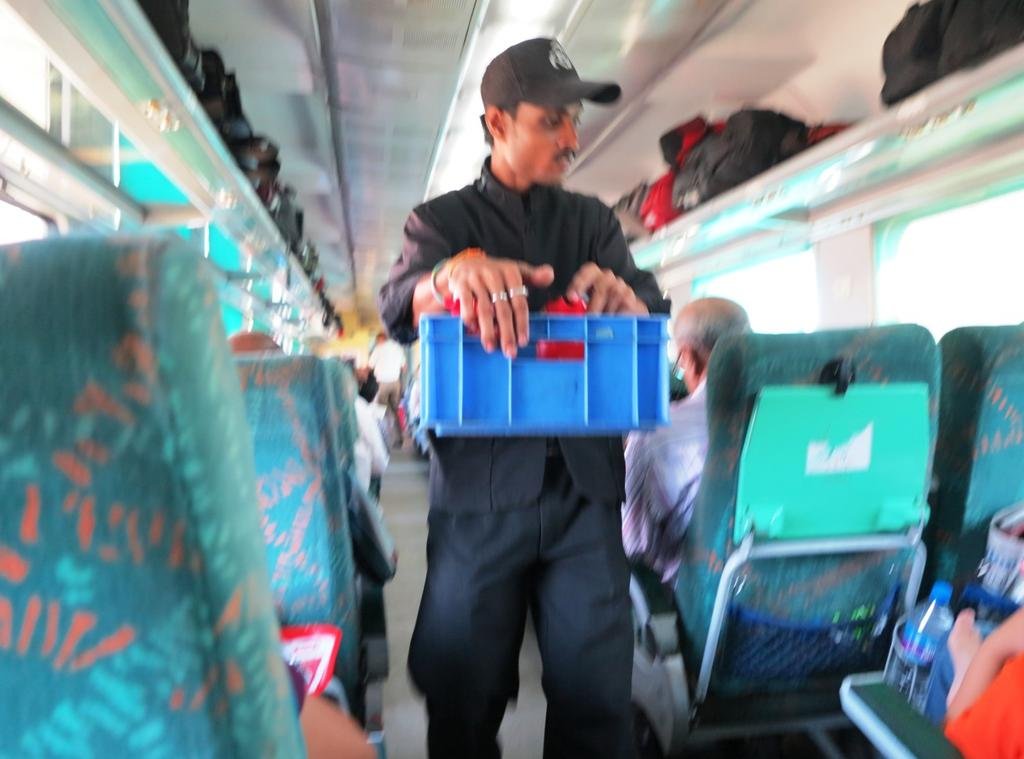
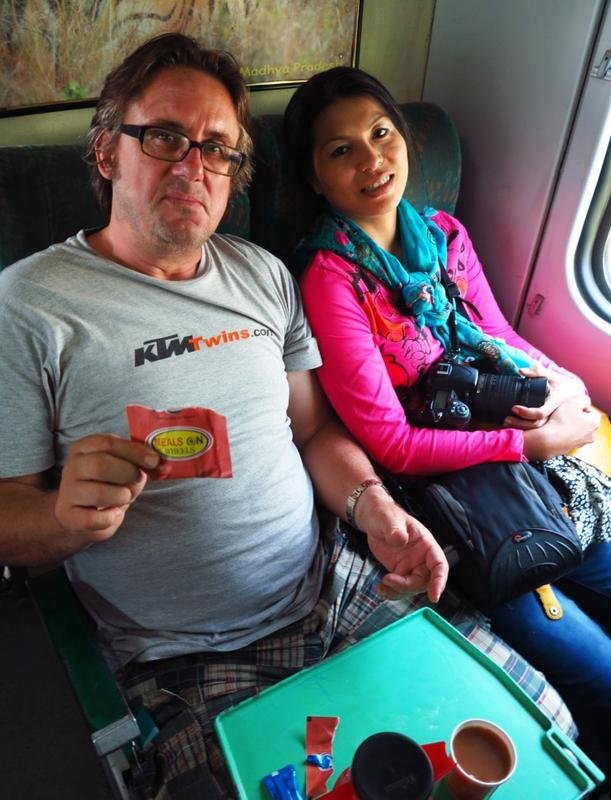
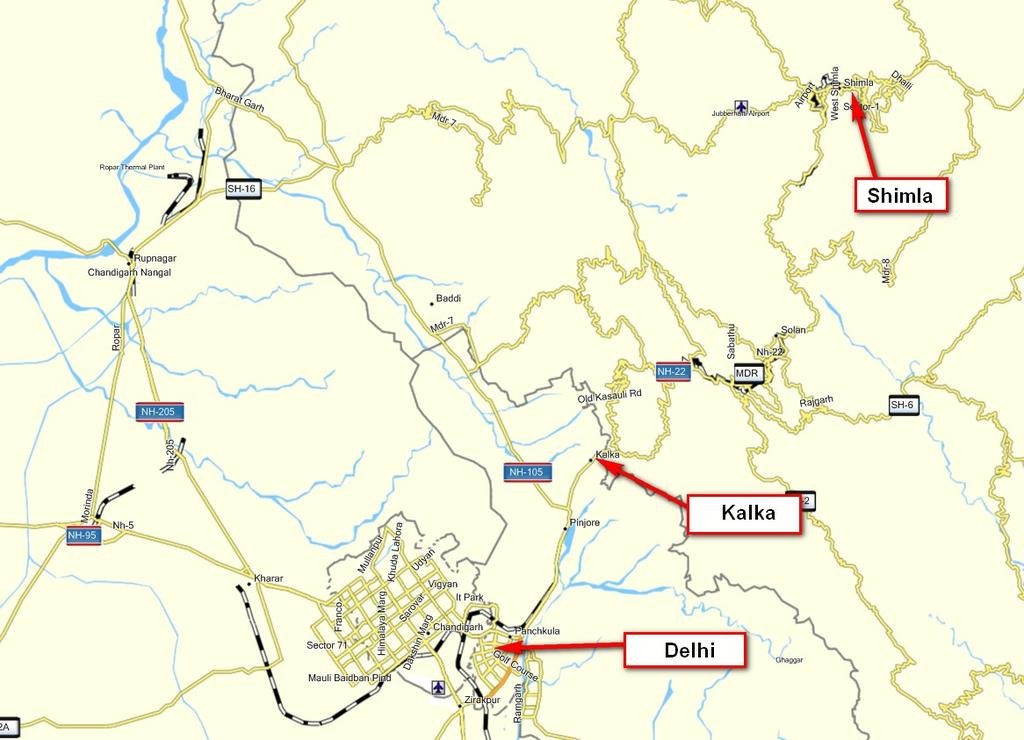

Then find the Delhi metro station to get the train 4 hours north to Kalka, lots of people sleeping all around in the station

Crazy as you'd expect



The train wasn't so bad, they served as much tea as you wanted, the chayawalla below bringing more tea



KTMphil
Senior member
Interesting sites out of the train window headed north, Som has some shots off the track-side lavatory -- here the rice fields with power for water pumps. looks like they do several crops a year
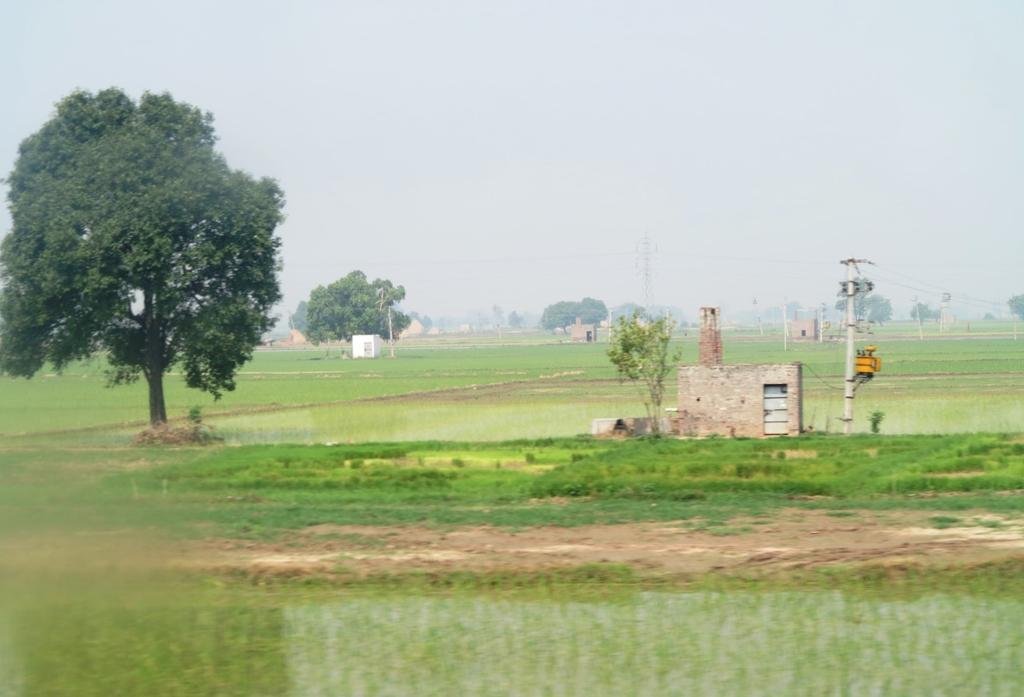
These guys looked pretty unfortunate
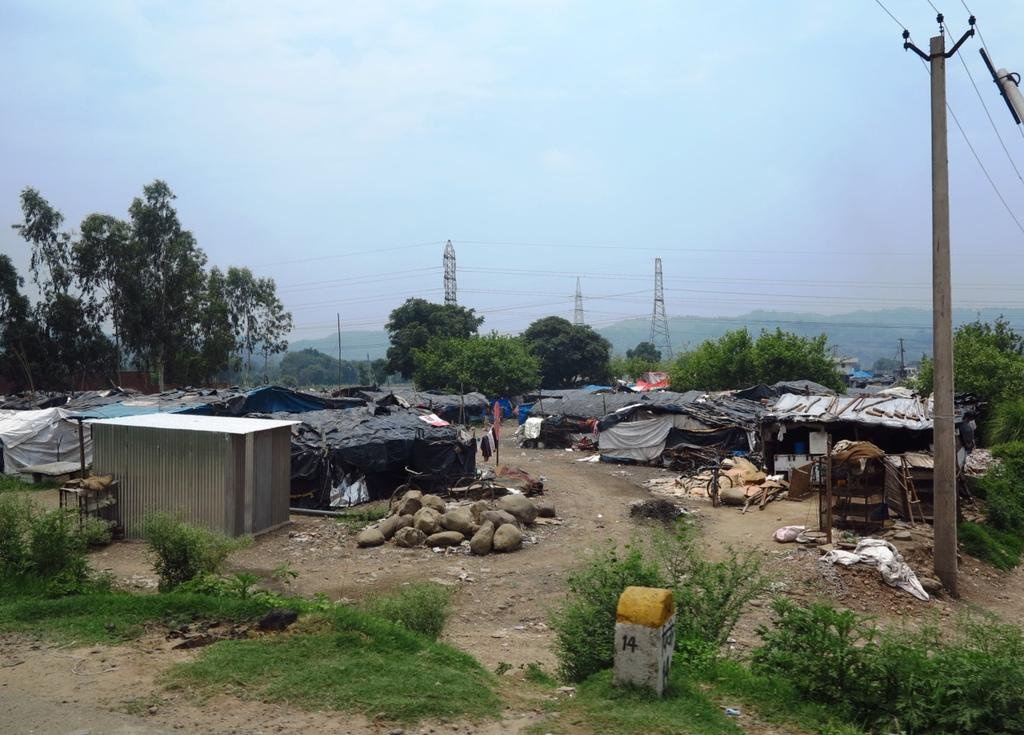
We decided that these people were balloon salesman
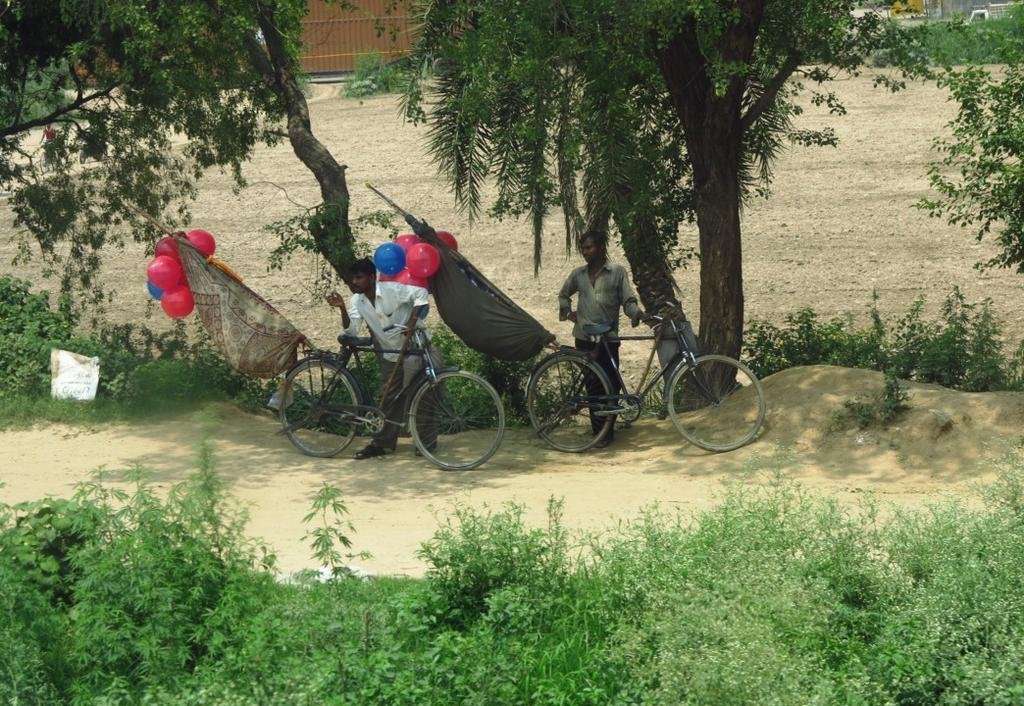
4 hours as promised we're in Kalka
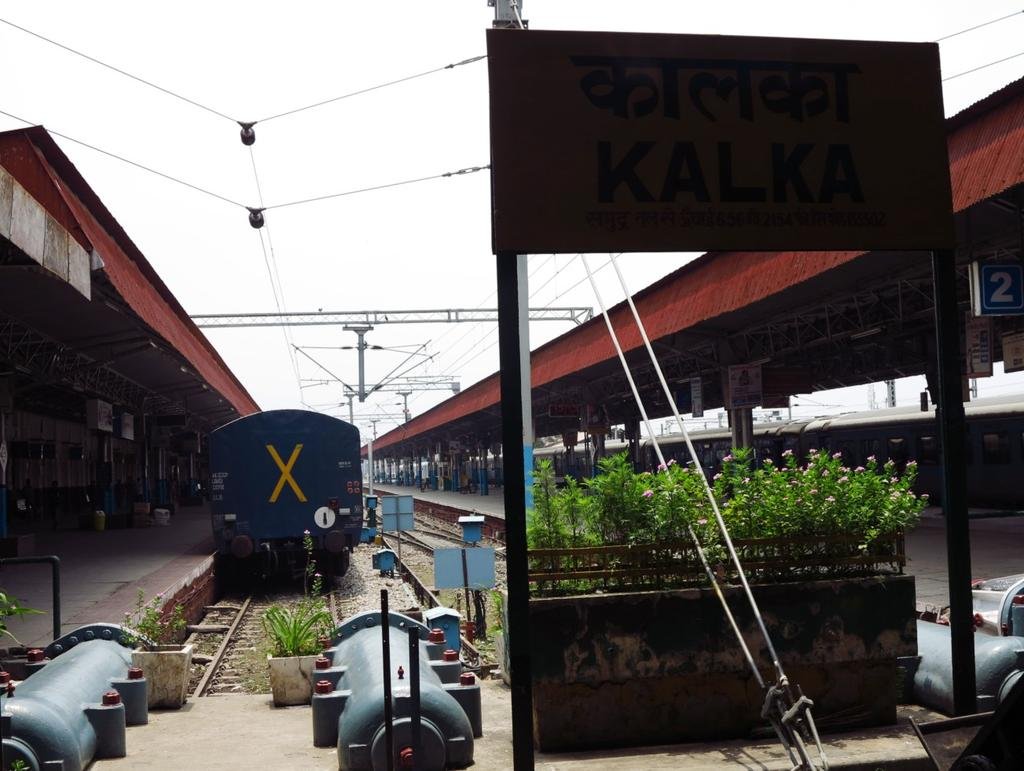
The famous Kalka to Shimla train, that climbs into the Himalayan mountains and crosses 864 bridges on its route
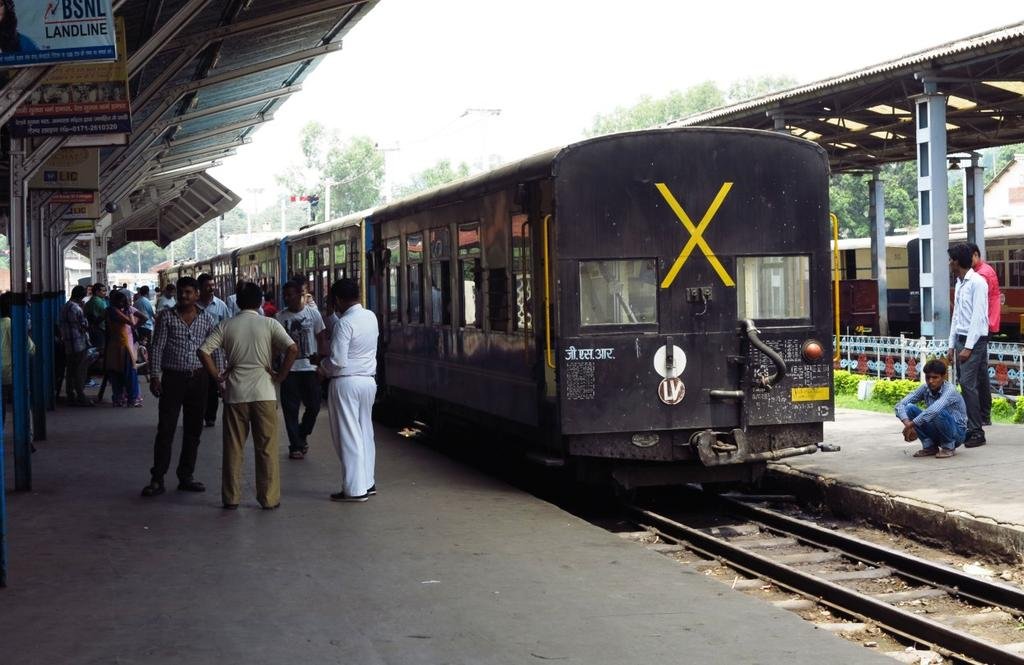
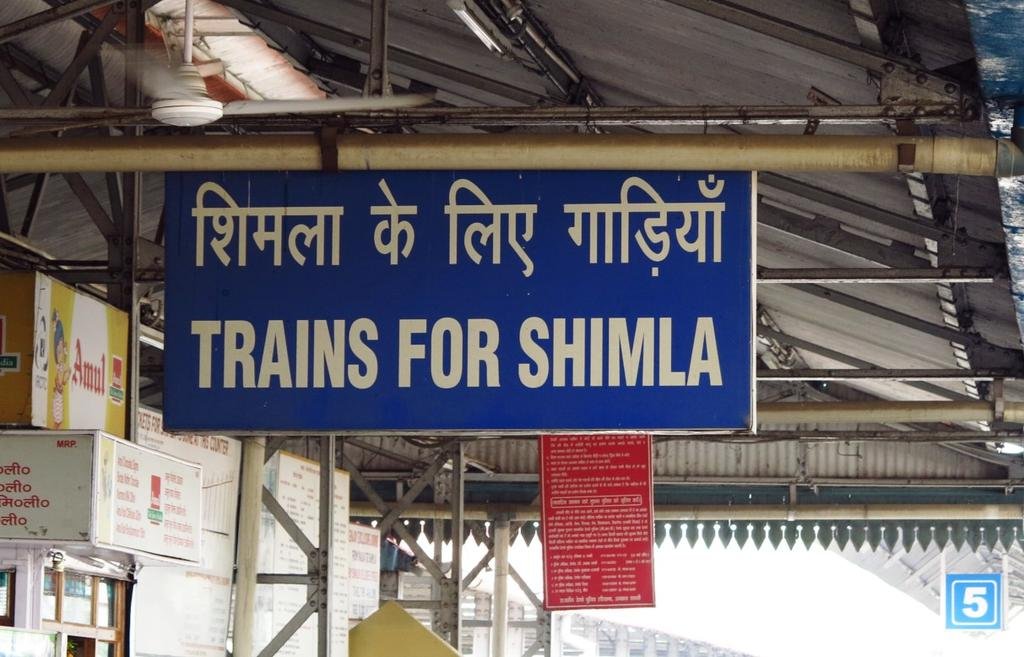
Kalka's 143 year old station
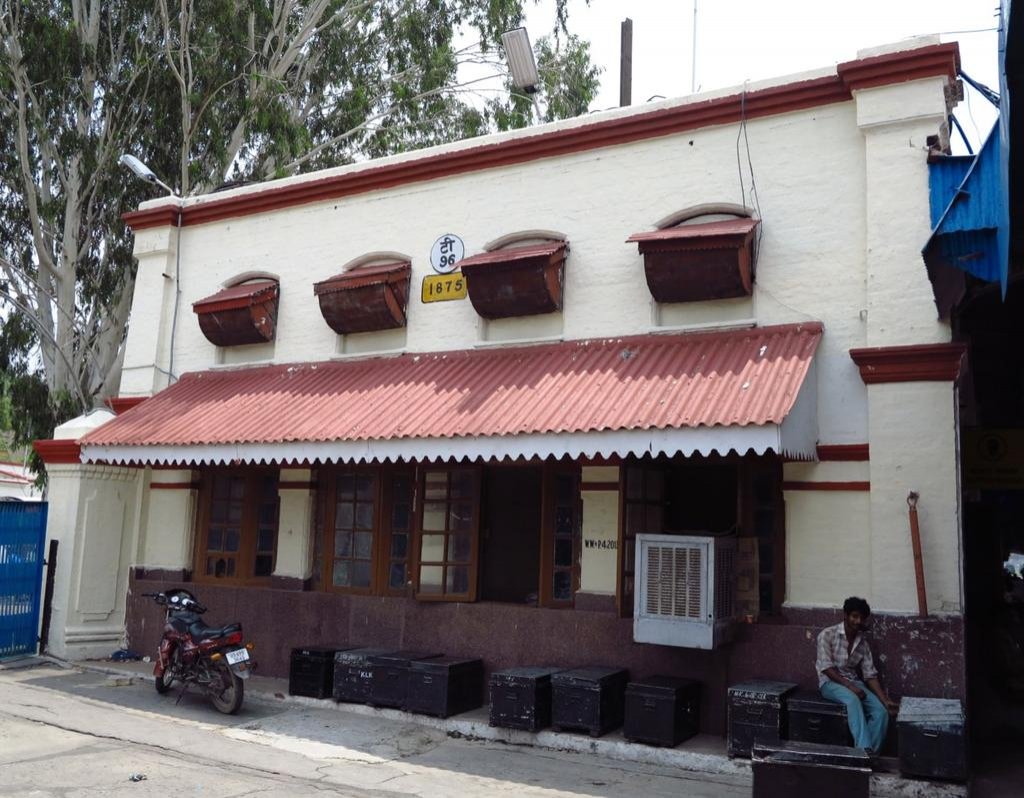
From Wiki re the Kalka to Shimla railway
History
Shimla (then spelt Simla) was settled by the British shortly after the first Anglo-Gurkha war, and is located at 7,116 feet (2,169 m) in the foothills of the Himalayas. By the 1830s, Shimla had already developed as a major base for the British.[SUP][citation needed][/SUP] It became the summer capital of British India in 1864, and was also the headquarters of the British army in India. Prior to construction of the railway, communication with the outside world was via village cart.[SUP][1][/SUP]
The railway was constructed on a two foot gauge (610mm) by the Delhi-Ambala-Kalka Railway Company commencing in 1898.[SUP][1][/SUP] The estimated cost of Rs 86,78,500, however, the cost doubled during execution of the project.[SUP][citation needed][/SUP] The 96.54 km (59.99 mi) line was opened for traffic November 9, 1903.[SUP][1][/SUP] Because of the high capital and maintenance cost, coupled with peculiar working conditions, the Kalka-Shimla Railway was allowed to charge fares that were higher than the prevailing tariffs on other lines. However, even this was not good enough to sustain the company and then, the Government had to purchase it on January 1, 1906 for Rs 1,71,07,748. In 1905 the line was regauged to 2'6" gauge under guidelines from the Indian War Department seeking to ensure uniformity in all imperial narrow gauge systems.


Ordinary local train halts at the Solan Station
In mid-August 2007, the government of Himachal Pradesh declared the railway a heritage property in preparation for its review in September.[SUP][2][/SUP]
On this route a city named Solan is passed through, which is also known as mini Shimla. During summer season a festival celebrating a goddess (Shoolini Devi), after which the city is named, is held in June.
For about a week starting on September 11, 2007, an expert team from UNESCO was on a visit to the railway to review and inspect the railway for possible selection as a World Heritage Site. On July 8, 2008, the Kalka-Shimla Railway was included in the UNESCO World Heritage List as part of the World Heritage Site Mountain Railways of India.[SUP][3][/SUP] The Mountain Railways of India (including Darjeeling Himalayan Railway and Nilgiri Mountain Railway) and Chhatrapati Shivaji Terminus in Mumbai have already been declared as world heritage properties.[SUP][4][/SUP]
Route


Kalka Railway Station
The Kalka-Shimla Railway was built to connect Shimla, the summer capital of India during the British Raj, with the Indian rail system. Now, Shimla is the capital city of Himachal Pradesh and Kalka is a town in the Panchkula district of Haryana. Spectacular scenery along the whole route, and the marvels of its construction, keeps the traveler on this line spell bound. On leaving Kalka, 656 meters (2,152 ft) above sea level, the railway enters the foothills and immediately commences its climb.
Stations
The route offers a panoramic feast of the picturesque Himalayas from the Sivalik foot hills at Kalka to several important points such as Dharampur, Solan, Kandaghat, Taradevi, Barog, Salogra, Totu (Jutogh), Summerhill and Shimla at an altitude of 2,076 meters (6,811 ft). Interestingly, all the 20 intermediate stations are located right next to bridges, built for the labour constructing the bridges to take rest there. Some of these have now been abandoned being unviable.[SUP][5][/SUP]


A typical passenger train on one of the line's large bridges
Tunnels
Originally 107 tunnels were built on Kalka Shimla Railway Track. In 1930 they were renumbered and four of them were discarded so only 103 were left. In 2006 tunnel number 46 was dismantled so presently only 102 are in use. But tunnel number 103, the last tunnel in Shimla, is still famous as tunnel number 103 as this place has become a famous landmark of the town.
The longest tunnel is at Barog, and is associated with local tales and legends. As per a famous story of Colonel Barog, the engineer of this tunnel, had committed suicide here. He started digging the tunnel from both ends and could not align them. So he was fined 1 rupee. He could not stomach up that stigma so shot himself in the incomplete tunnel, which still exists.[SUP][6][/SUP] Chief Engineer H.S. Herlington completed it after the way for constructing this was earmarked by Bhalku, a local sadhu (monk), during 1900- 1903[SUP][5][/SUP][SUP][7][/SUP]
Infrastructure
The line has 864 bridges, one of which is a 18.29 metre (60 ft) plate girder span and steel truss. The others are viaducts with multi-arched galleries like the ancient Roman aqueducts. Bridge No. 493, historically known as the "Arch Gallery", situated between Kandaghat and Kanoh stations, is an arch bridge in three stages, constructed with stone masonry. Bridge No. 226; between Sonwara and Dharampur is an arch gallery bridge having 5 tier galleries of multiple spans, constructed with stone masonry and bridging a deep valley surrounded by high peaks.
The railway has a ruling gradient of 1 in 33 or 3%. It has 919 curves, the sharpest being 48 degrees (a radius of 37.47 m or 122.93 feet). Climbing from 656 meters (2,152 ft), the line terminates at an elevation of 2,076 meters (6,811 ft) at Shimla. The line originally used 42 lb/yd (21 kg/m) rail but this was later relaid to 60 lb/yd (30 kg/m) rail.[SUP][1][/SUP]

These guys looked pretty unfortunate

We decided that these people were balloon salesman

4 hours as promised we're in Kalka

The famous Kalka to Shimla train, that climbs into the Himalayan mountains and crosses 864 bridges on its route


Kalka's 143 year old station

From Wiki re the Kalka to Shimla railway
History
Shimla (then spelt Simla) was settled by the British shortly after the first Anglo-Gurkha war, and is located at 7,116 feet (2,169 m) in the foothills of the Himalayas. By the 1830s, Shimla had already developed as a major base for the British.[SUP][citation needed][/SUP] It became the summer capital of British India in 1864, and was also the headquarters of the British army in India. Prior to construction of the railway, communication with the outside world was via village cart.[SUP][1][/SUP]
The railway was constructed on a two foot gauge (610mm) by the Delhi-Ambala-Kalka Railway Company commencing in 1898.[SUP][1][/SUP] The estimated cost of Rs 86,78,500, however, the cost doubled during execution of the project.[SUP][citation needed][/SUP] The 96.54 km (59.99 mi) line was opened for traffic November 9, 1903.[SUP][1][/SUP] Because of the high capital and maintenance cost, coupled with peculiar working conditions, the Kalka-Shimla Railway was allowed to charge fares that were higher than the prevailing tariffs on other lines. However, even this was not good enough to sustain the company and then, the Government had to purchase it on January 1, 1906 for Rs 1,71,07,748. In 1905 the line was regauged to 2'6" gauge under guidelines from the Indian War Department seeking to ensure uniformity in all imperial narrow gauge systems.


Ordinary local train halts at the Solan Station
In mid-August 2007, the government of Himachal Pradesh declared the railway a heritage property in preparation for its review in September.[SUP][2][/SUP]
On this route a city named Solan is passed through, which is also known as mini Shimla. During summer season a festival celebrating a goddess (Shoolini Devi), after which the city is named, is held in June.
For about a week starting on September 11, 2007, an expert team from UNESCO was on a visit to the railway to review and inspect the railway for possible selection as a World Heritage Site. On July 8, 2008, the Kalka-Shimla Railway was included in the UNESCO World Heritage List as part of the World Heritage Site Mountain Railways of India.[SUP][3][/SUP] The Mountain Railways of India (including Darjeeling Himalayan Railway and Nilgiri Mountain Railway) and Chhatrapati Shivaji Terminus in Mumbai have already been declared as world heritage properties.[SUP][4][/SUP]
Route
| [hide]Kalka-Shimla Railway | ||||||||||||||||||||||||||||||||||||||||||||||||||||||
|---|---|---|---|---|---|---|---|---|---|---|---|---|---|---|---|---|---|---|---|---|---|---|---|---|---|---|---|---|---|---|---|---|---|---|---|---|---|---|---|---|---|---|---|---|---|---|---|---|---|---|---|---|---|---|
|

Kalka Railway Station
The Kalka-Shimla Railway was built to connect Shimla, the summer capital of India during the British Raj, with the Indian rail system. Now, Shimla is the capital city of Himachal Pradesh and Kalka is a town in the Panchkula district of Haryana. Spectacular scenery along the whole route, and the marvels of its construction, keeps the traveler on this line spell bound. On leaving Kalka, 656 meters (2,152 ft) above sea level, the railway enters the foothills and immediately commences its climb.
Stations
The route offers a panoramic feast of the picturesque Himalayas from the Sivalik foot hills at Kalka to several important points such as Dharampur, Solan, Kandaghat, Taradevi, Barog, Salogra, Totu (Jutogh), Summerhill and Shimla at an altitude of 2,076 meters (6,811 ft). Interestingly, all the 20 intermediate stations are located right next to bridges, built for the labour constructing the bridges to take rest there. Some of these have now been abandoned being unviable.[SUP][5][/SUP]


A typical passenger train on one of the line's large bridges
Tunnels
Originally 107 tunnels were built on Kalka Shimla Railway Track. In 1930 they were renumbered and four of them were discarded so only 103 were left. In 2006 tunnel number 46 was dismantled so presently only 102 are in use. But tunnel number 103, the last tunnel in Shimla, is still famous as tunnel number 103 as this place has become a famous landmark of the town.
The longest tunnel is at Barog, and is associated with local tales and legends. As per a famous story of Colonel Barog, the engineer of this tunnel, had committed suicide here. He started digging the tunnel from both ends and could not align them. So he was fined 1 rupee. He could not stomach up that stigma so shot himself in the incomplete tunnel, which still exists.[SUP][6][/SUP] Chief Engineer H.S. Herlington completed it after the way for constructing this was earmarked by Bhalku, a local sadhu (monk), during 1900- 1903[SUP][5][/SUP][SUP][7][/SUP]
Infrastructure
The line has 864 bridges, one of which is a 18.29 metre (60 ft) plate girder span and steel truss. The others are viaducts with multi-arched galleries like the ancient Roman aqueducts. Bridge No. 493, historically known as the "Arch Gallery", situated between Kandaghat and Kanoh stations, is an arch bridge in three stages, constructed with stone masonry. Bridge No. 226; between Sonwara and Dharampur is an arch gallery bridge having 5 tier galleries of multiple spans, constructed with stone masonry and bridging a deep valley surrounded by high peaks.
The railway has a ruling gradient of 1 in 33 or 3%. It has 919 curves, the sharpest being 48 degrees (a radius of 37.47 m or 122.93 feet). Climbing from 656 meters (2,152 ft), the line terminates at an elevation of 2,076 meters (6,811 ft) at Shimla. The line originally used 42 lb/yd (21 kg/m) rail but this was later relaid to 60 lb/yd (30 kg/m) rail.[SUP][1][/SUP]
KTMphil
Senior member
Will K. Som drive a 500 or a 350? The 350 is very smooth and a sweet engine!
The 500 Bullet Machismo
Last edited:
My 1st video online ever, she's talking to ya! 1993 Royal Enfield 500 Bullet - YouTube
Nice, and you? A 612c.c. cafe racer :-)??The 500 Bullet Machismo
KTMphil
Senior member
KTMphil
Senior member
Nice, and you? A 612c.c. cafe racer :-)??
I think mine is a regular 500 Bullet



